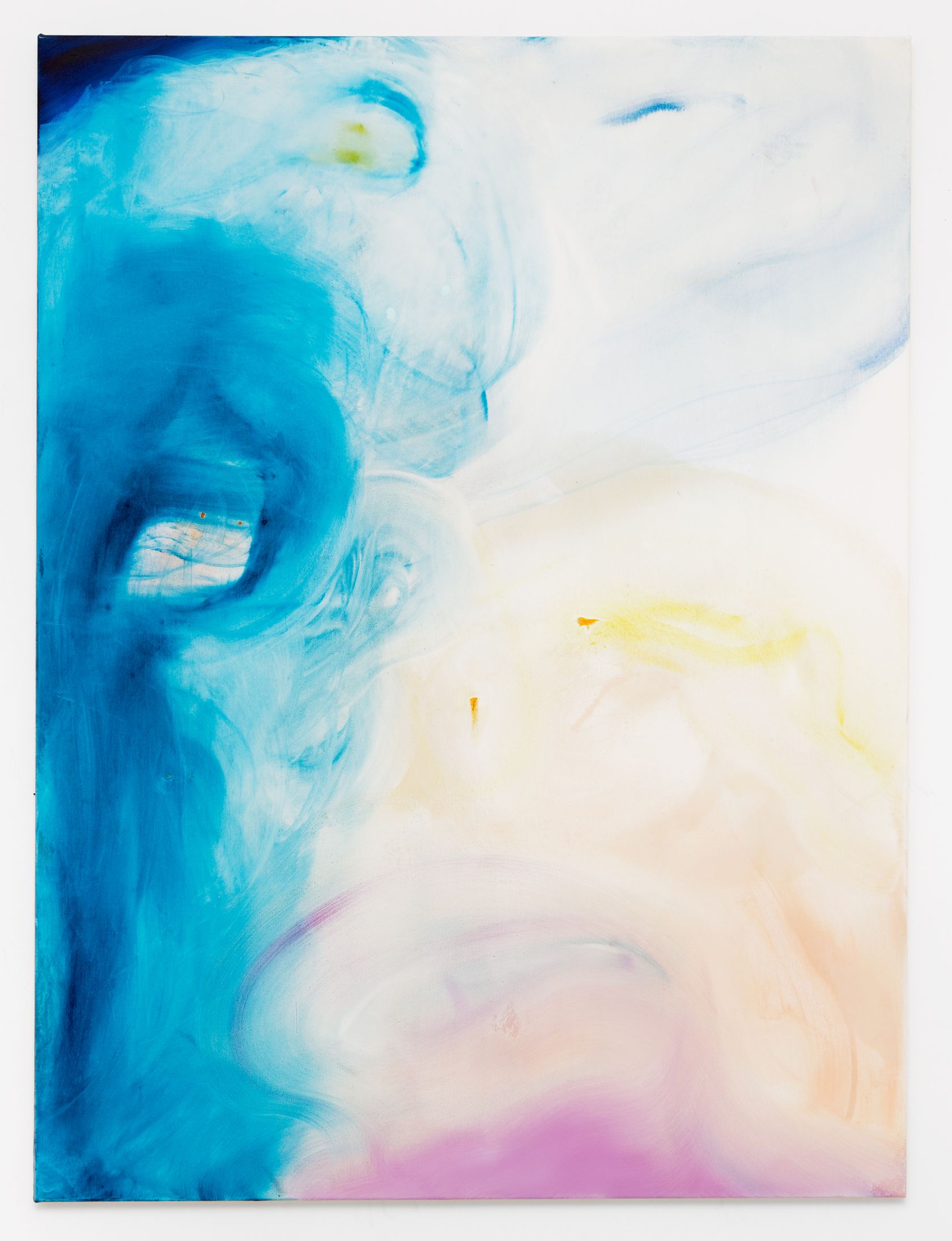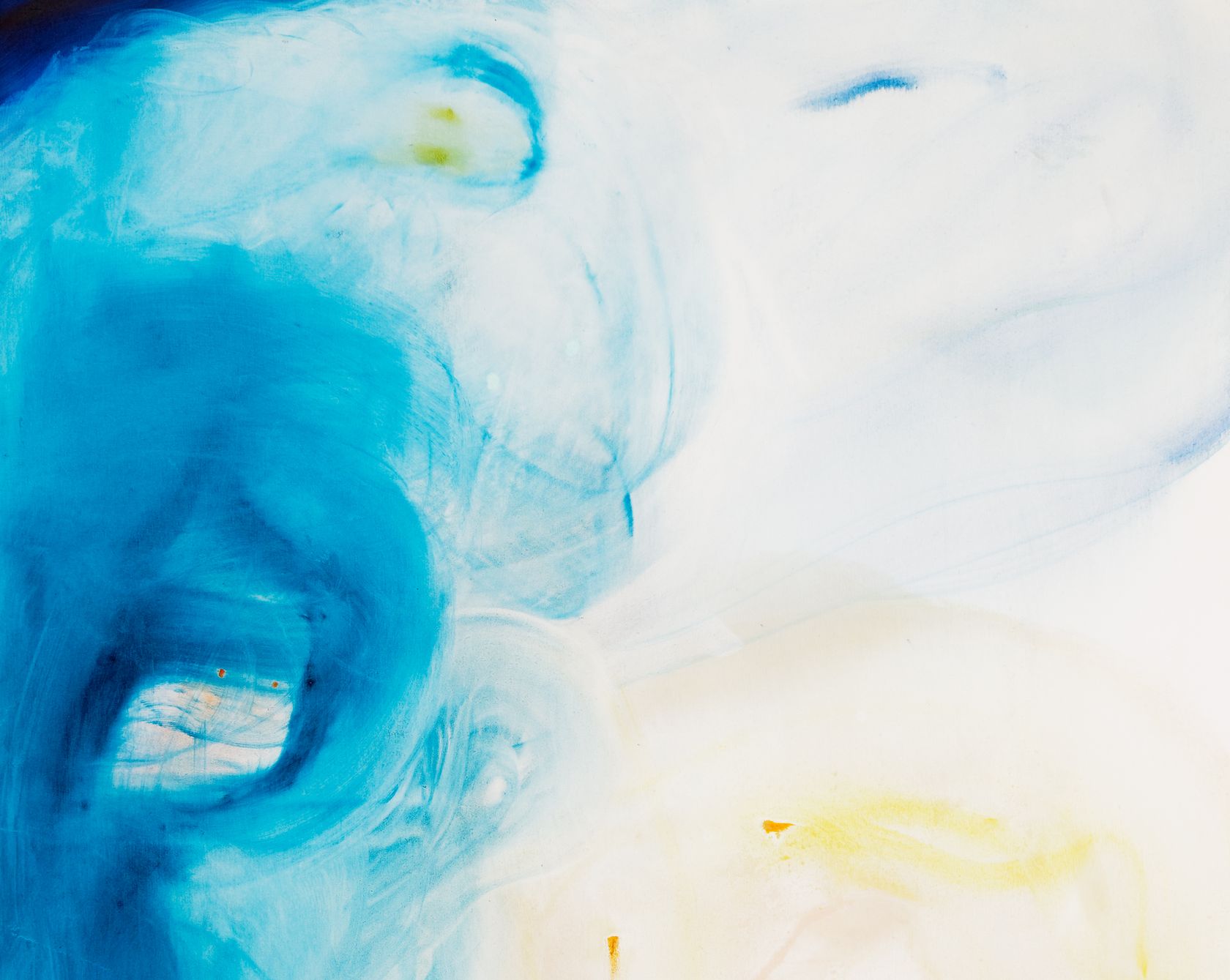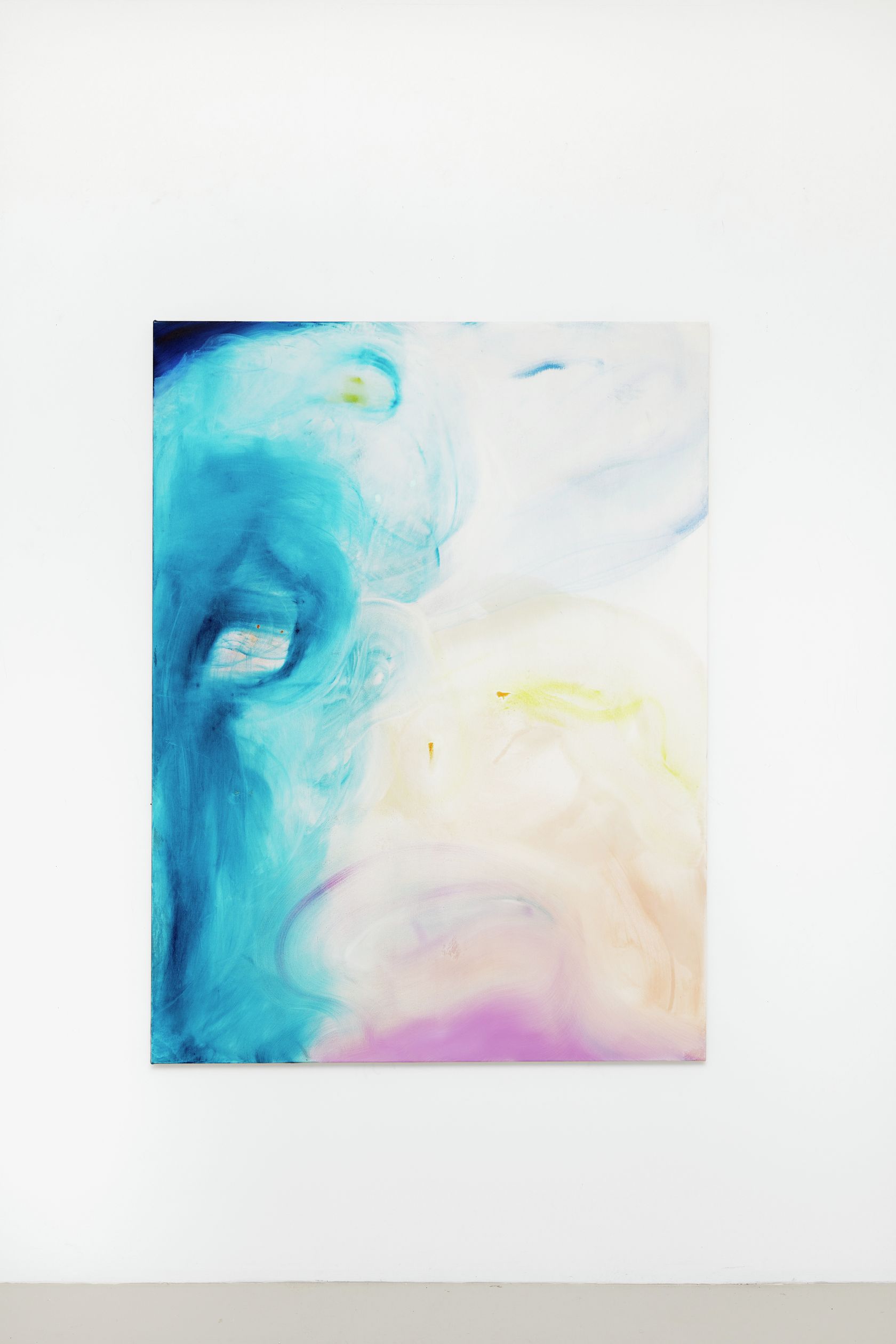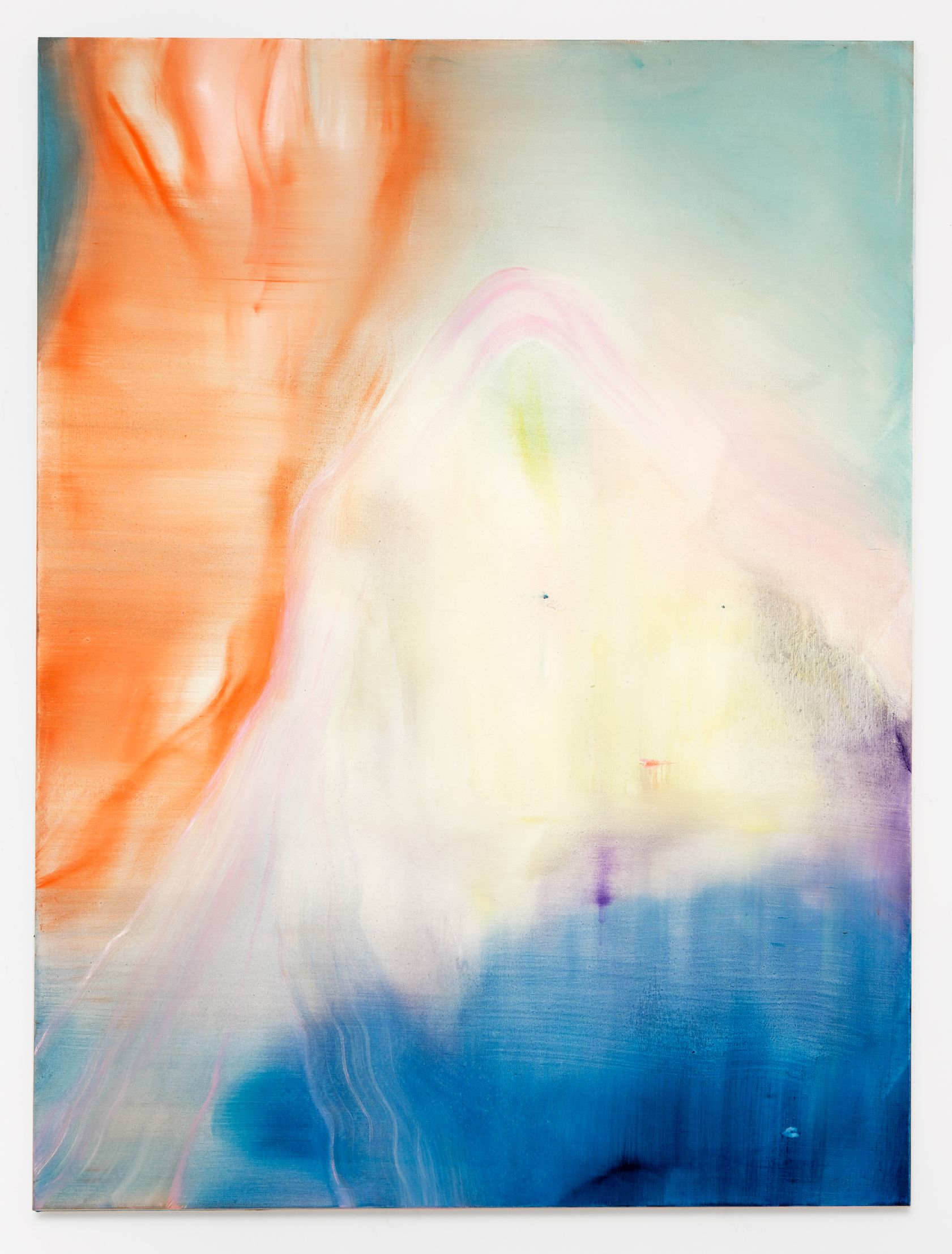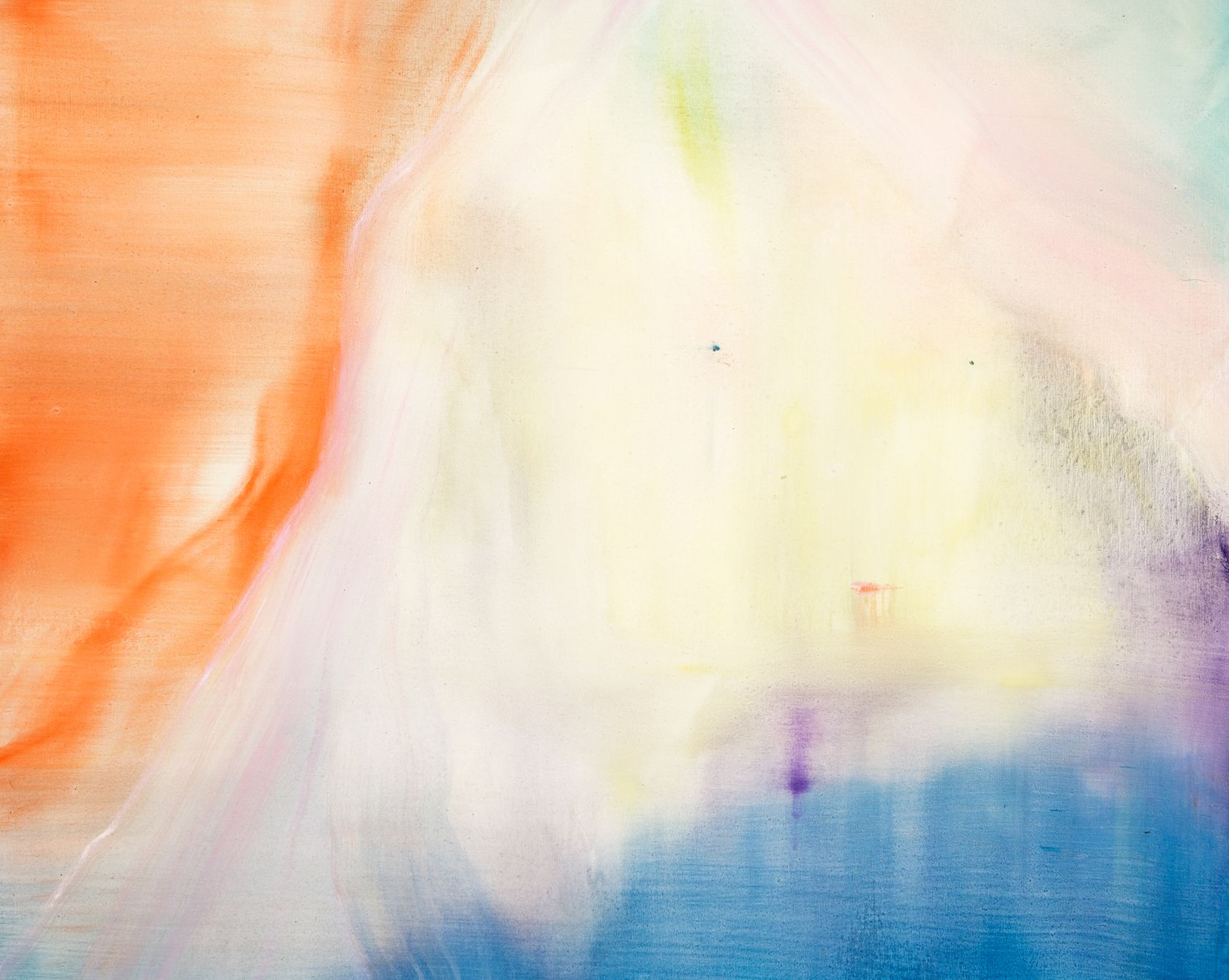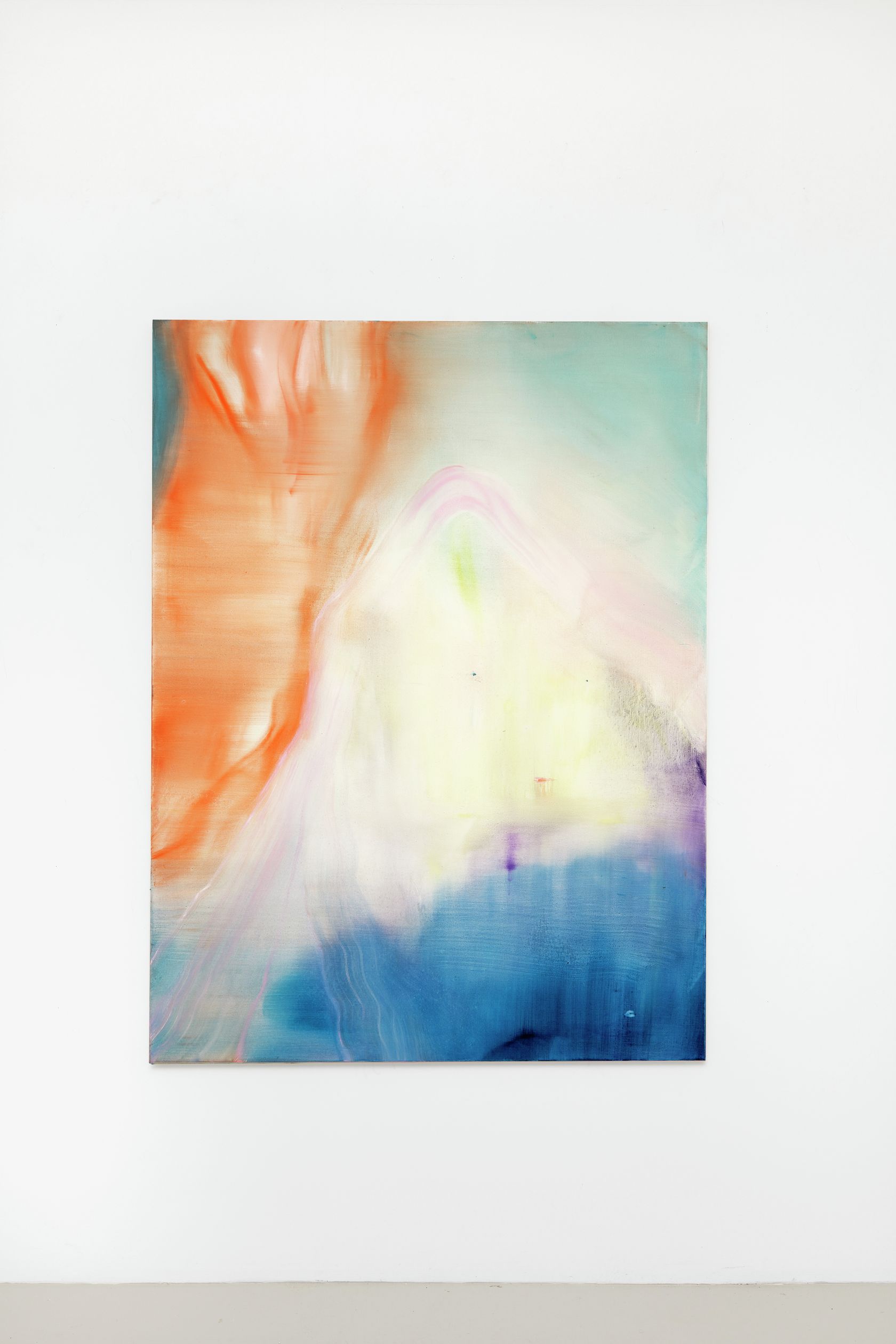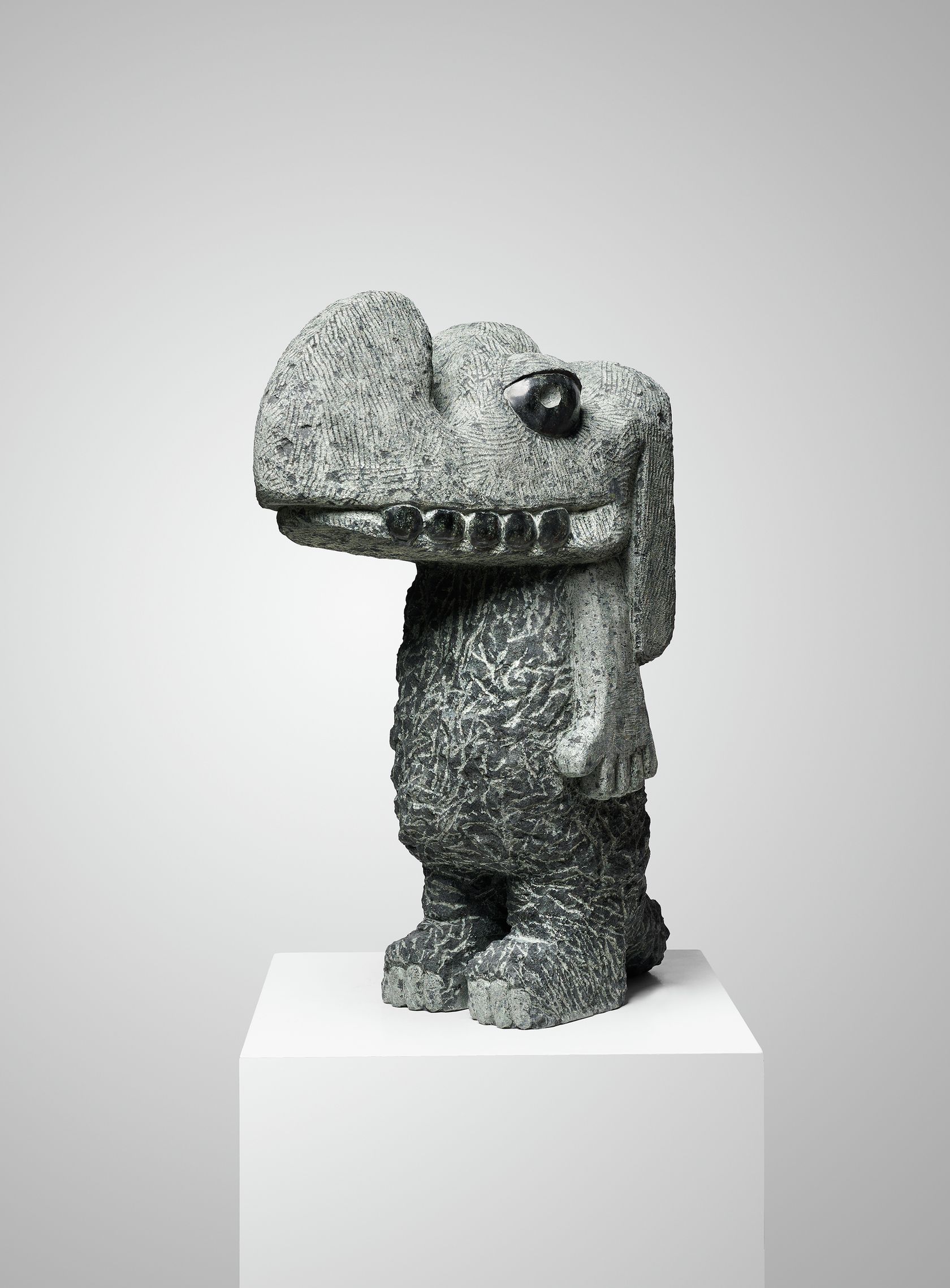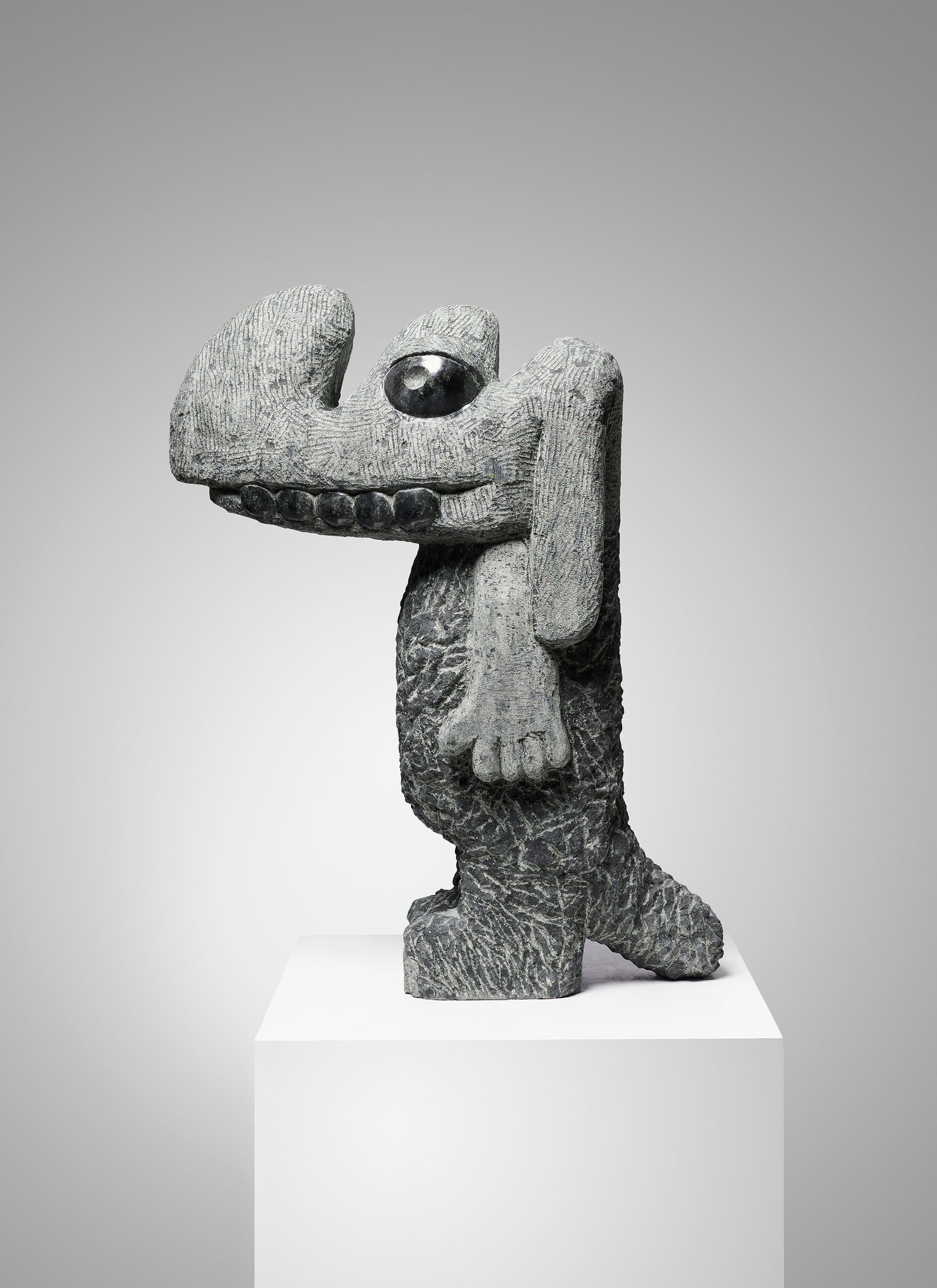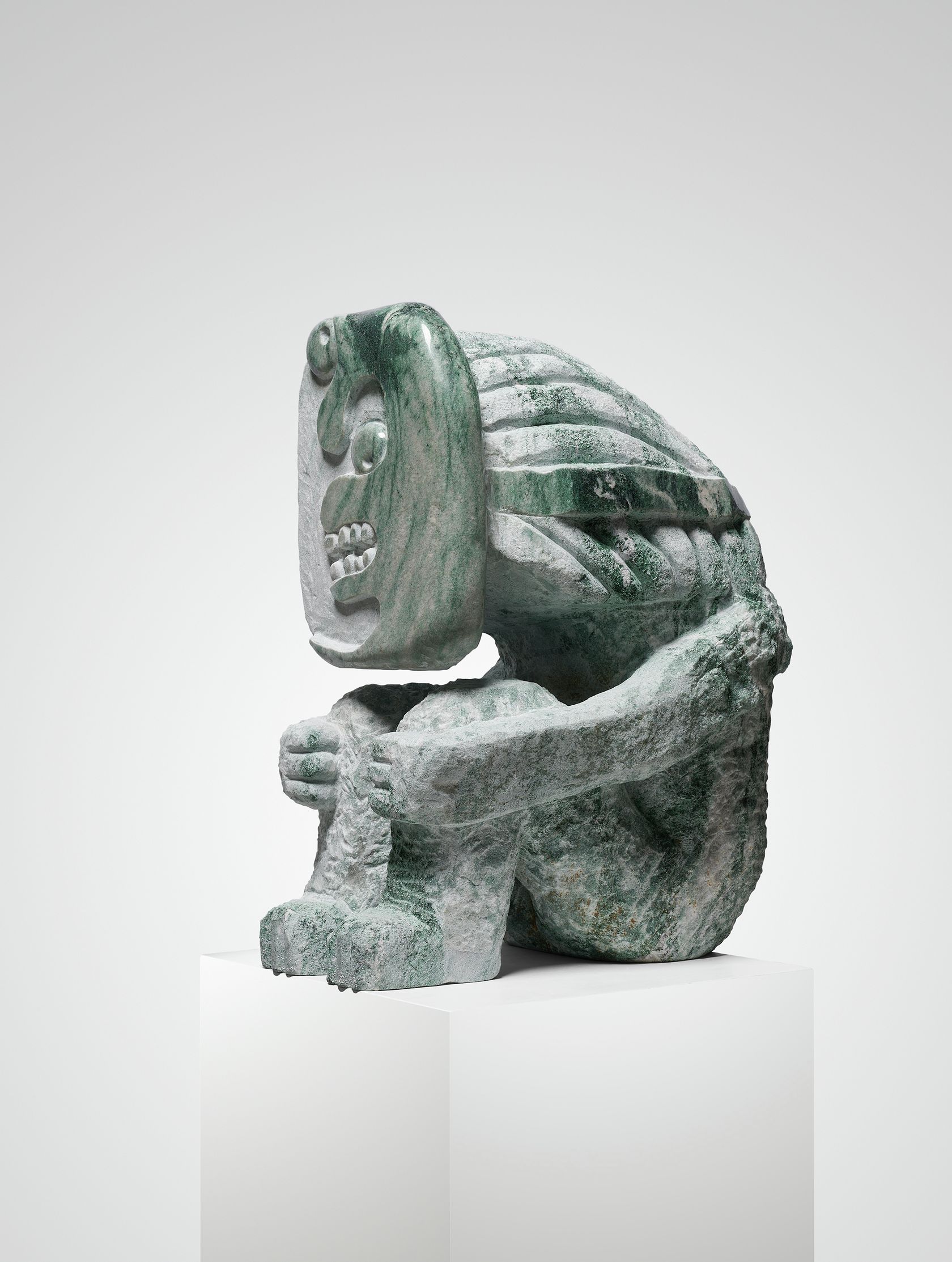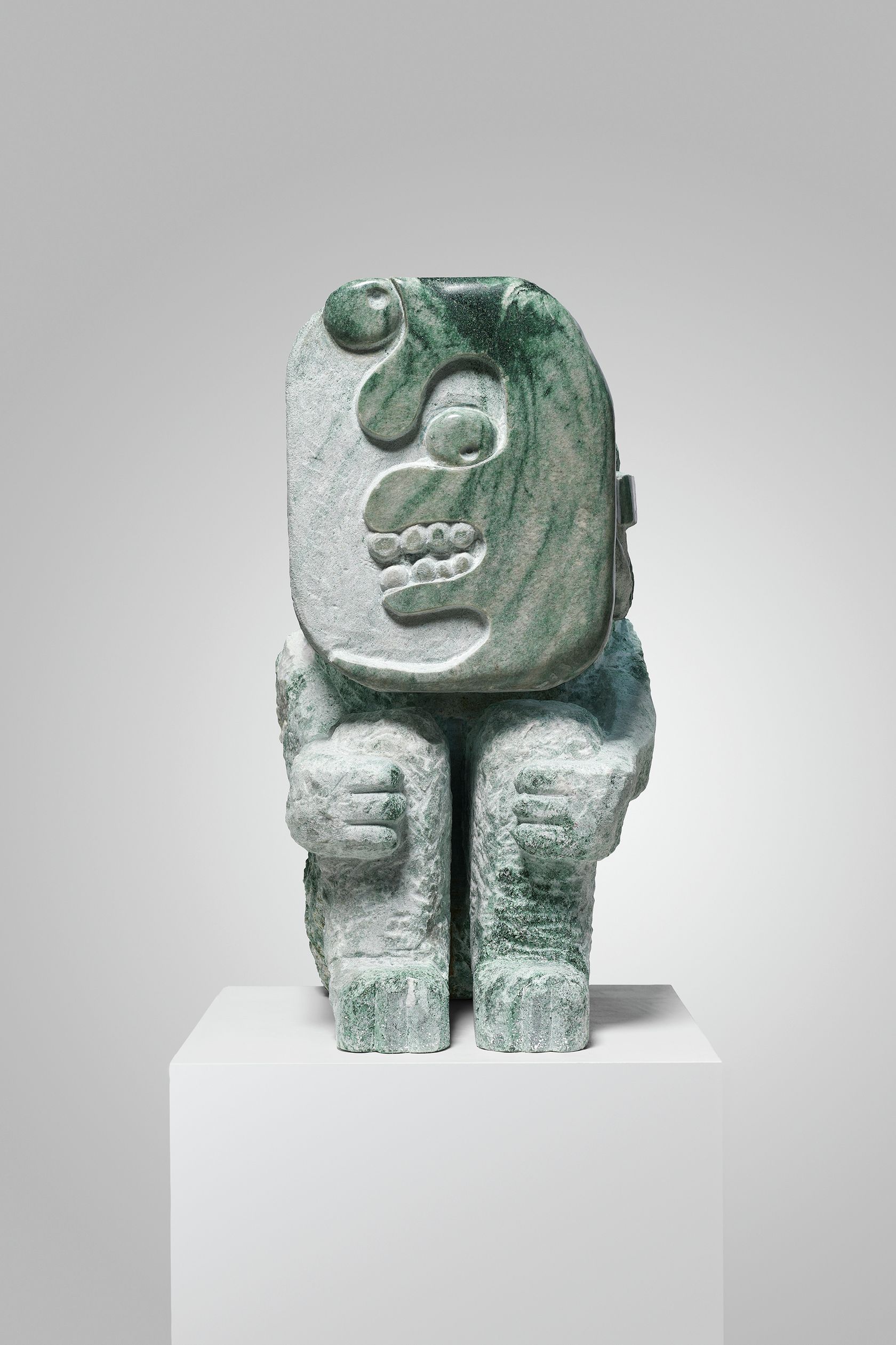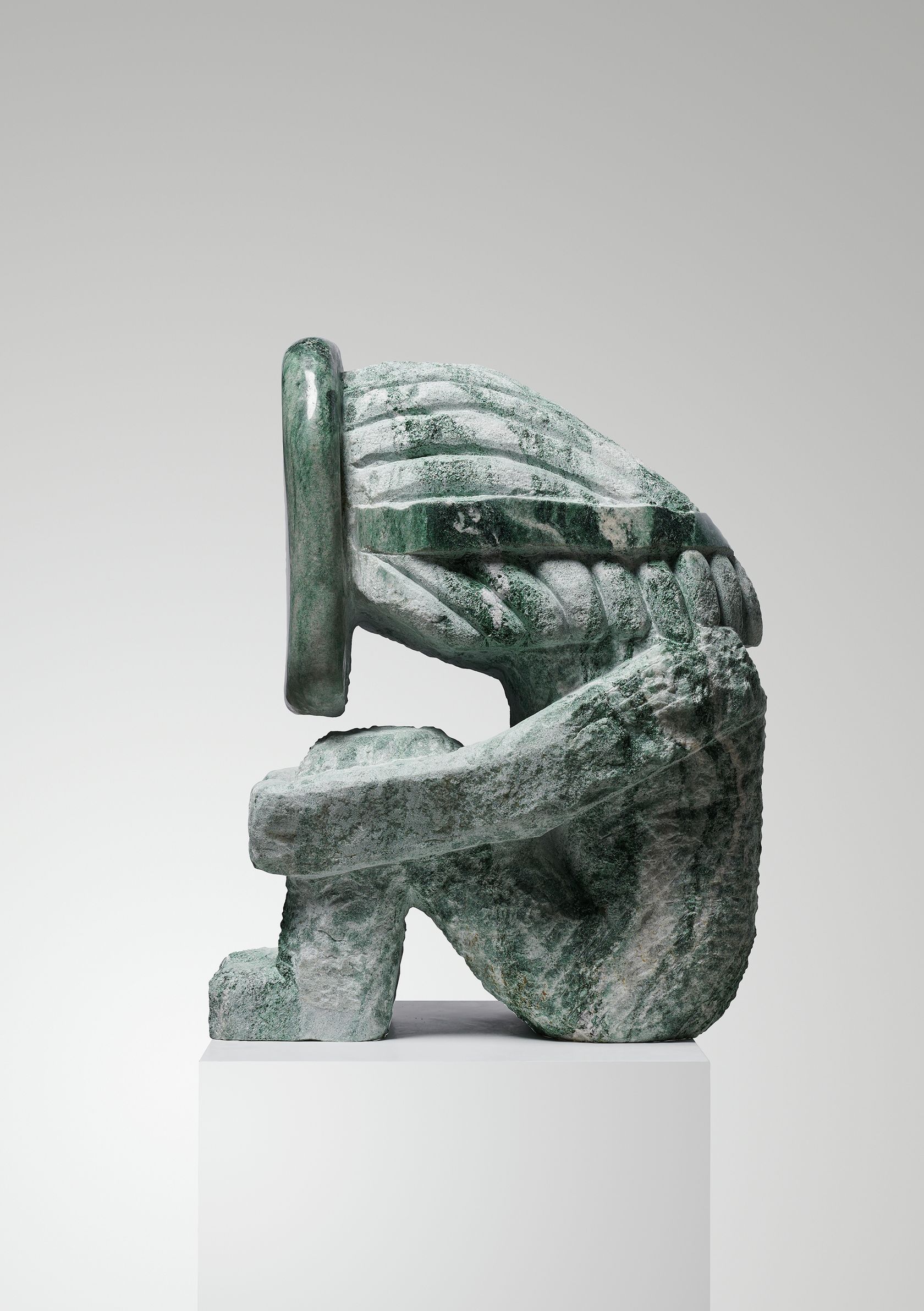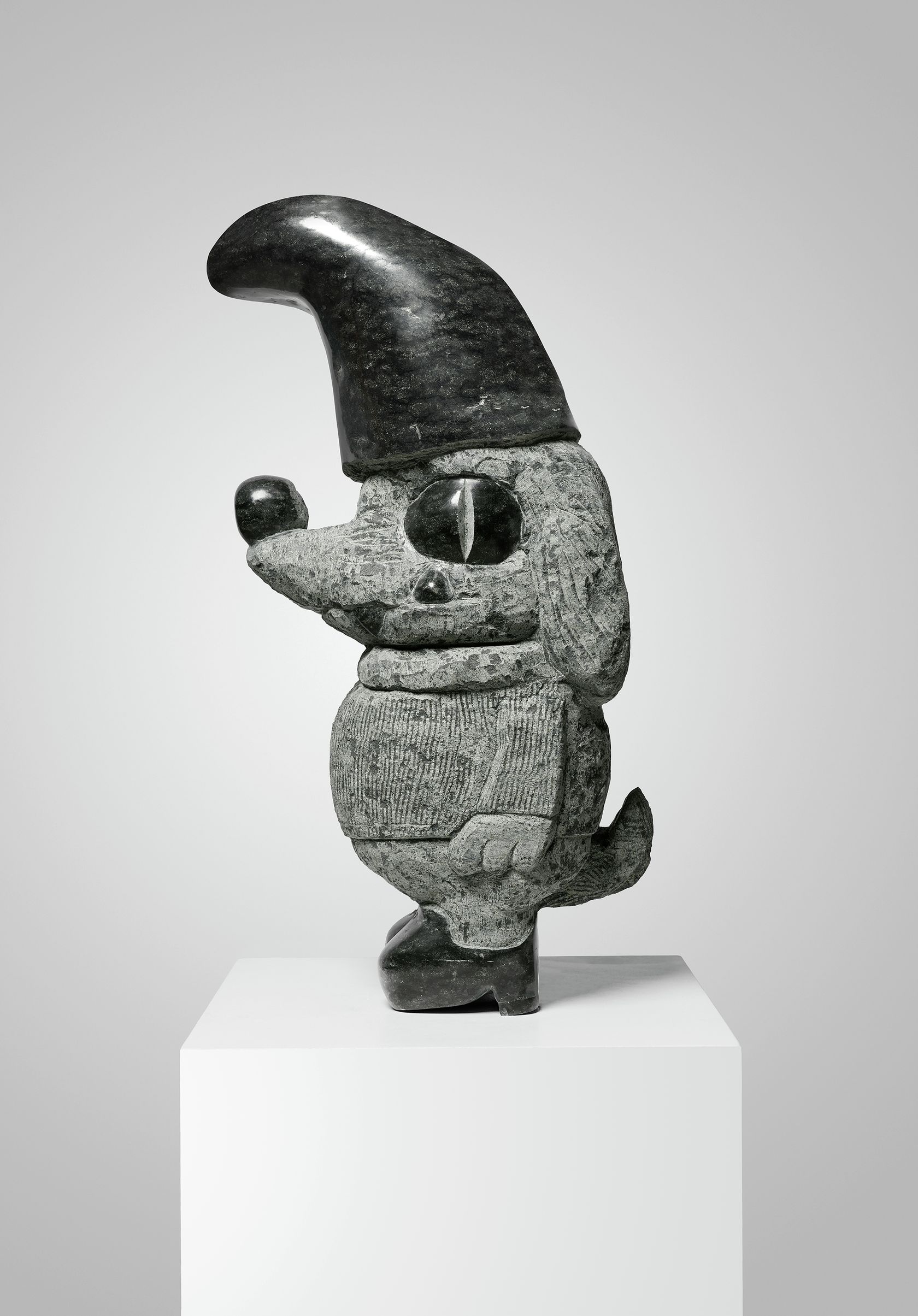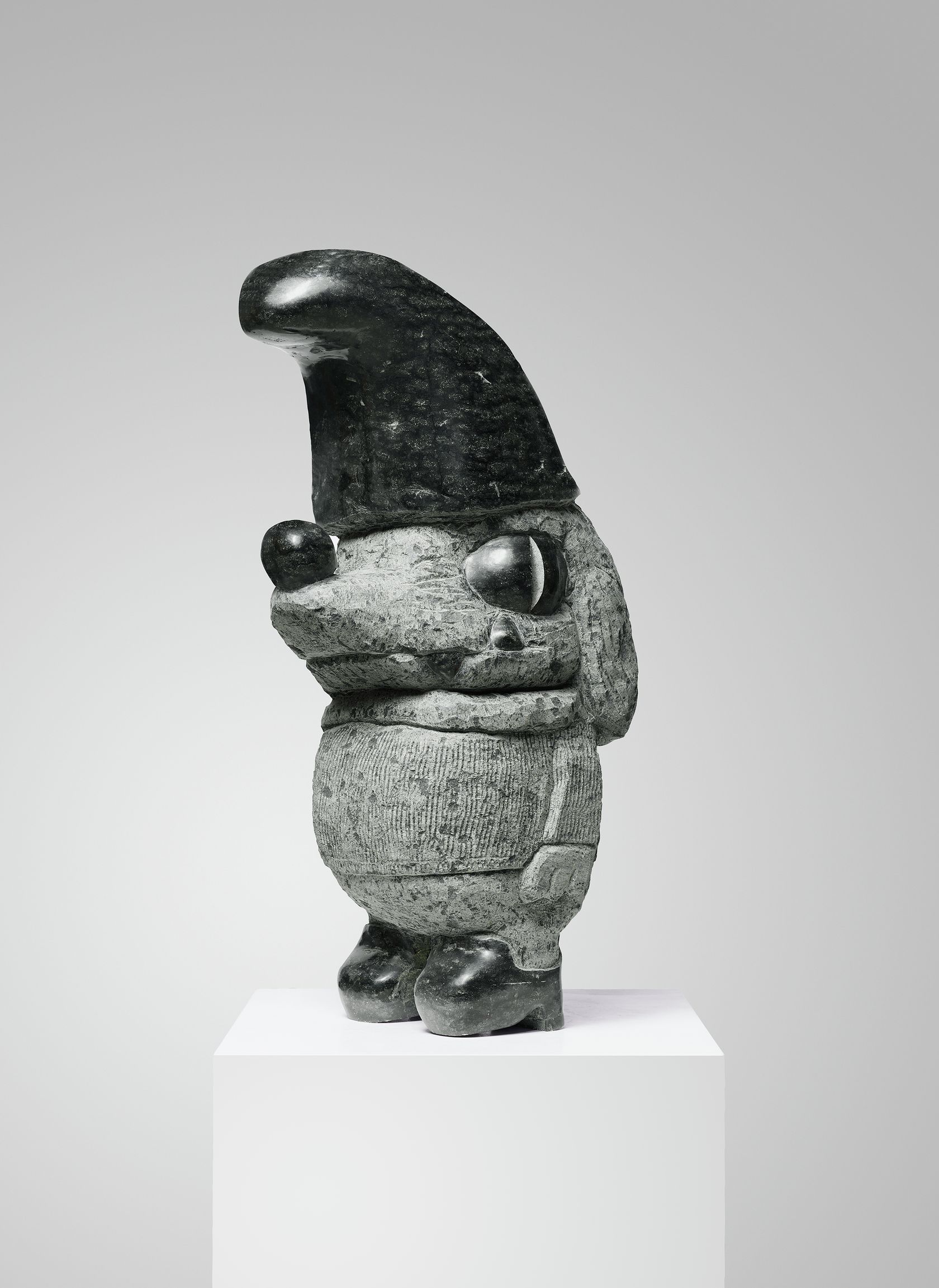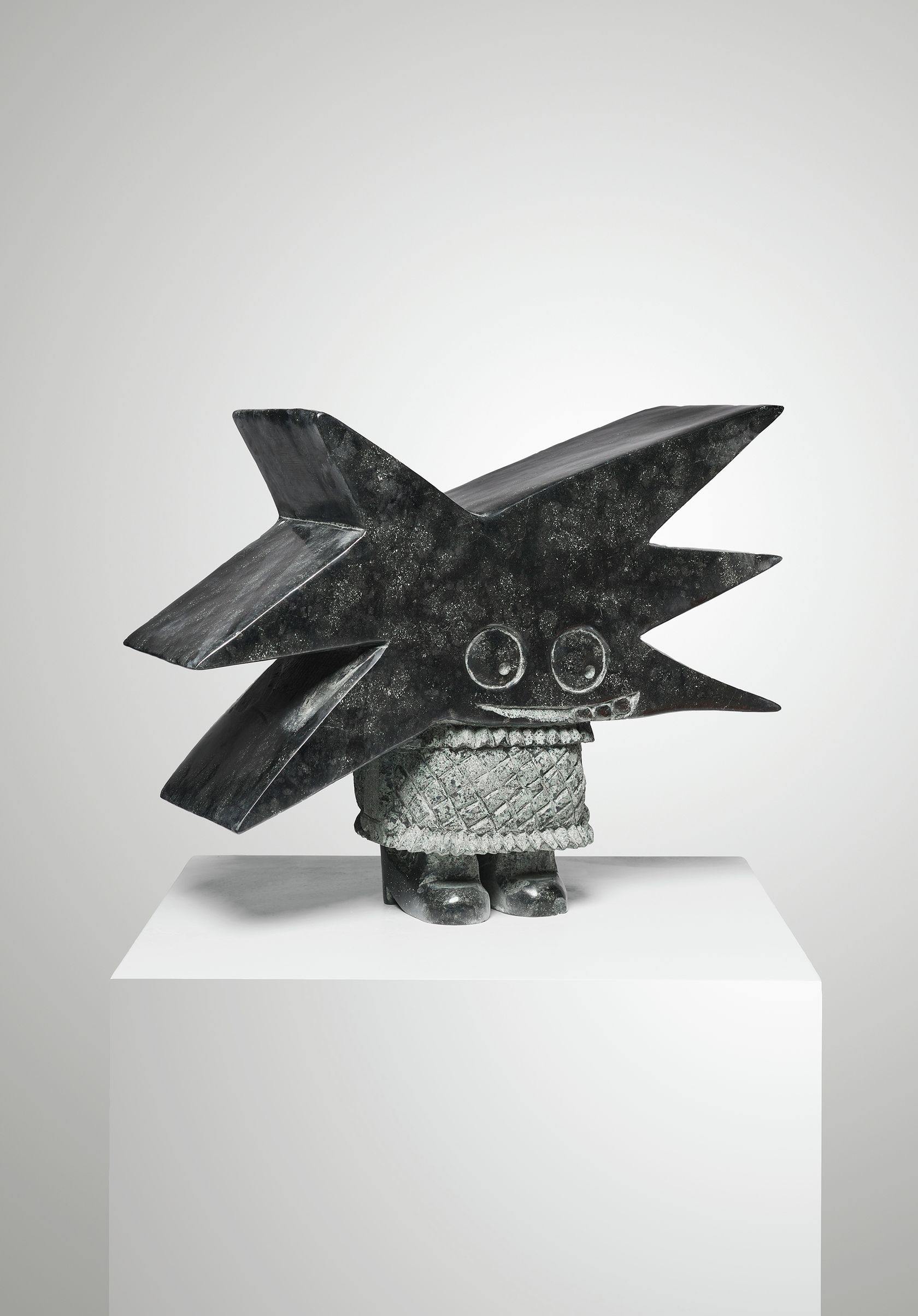To learn more about available works, please provide your contact information
A major figure of 20th century literature and ingenious inventor of the cut-up technique, William S. Burroughs (1914-1997) has achieved iconic status within the American counter-culture, whose influence reaches far further than just the world of literature. He almost exclusively dedicated the last fifteen years of his life to painting, from 1982 onwards experimenting with a series of techniques including his shotgun paintings and subsequently combine paintings, that brought together collage, stencils, ink drawing, spray paint, painting.
True to his non-conformist thinking, Burroughs painting sat outside any form of tradition or pre-established set of rules, using what he had on hand: suction cups, mushrooms… on completely unexpected supports: cardboard folder sleeves, doors… Automatic works, random processes and found materials, the artist’s oeuvre is shot through with shamanistic thought and porous to invisible and magic worlds.
William S. Burroughs’ oeuvre has been the subject of many retrospective exhibitions in both the USA and Europe, at the LACMA, Los Angeles (US), the ZKM, Karlsruhe (DE), the Deichtorhallen, Hamburg (DE), the Photographer’s Gallery, London (UK) and the Espai d’Art Contemporani in Castellón de la Plana (ES). His works are included in the collections of the Whitney Museum of American Art, New York (US), the LACMA, Los Angeles (US), the British Museum, London (UK), the Kochi Museum of Art, Kochi (JP), the Kunsthalle Wien, Vienna (AT), the Museet for Samtidskunst / Museum of Contemporary Art, Roskilde (DK) and the Museum für Moderne Kunst (MMK), Frankfurt/Main (DE).
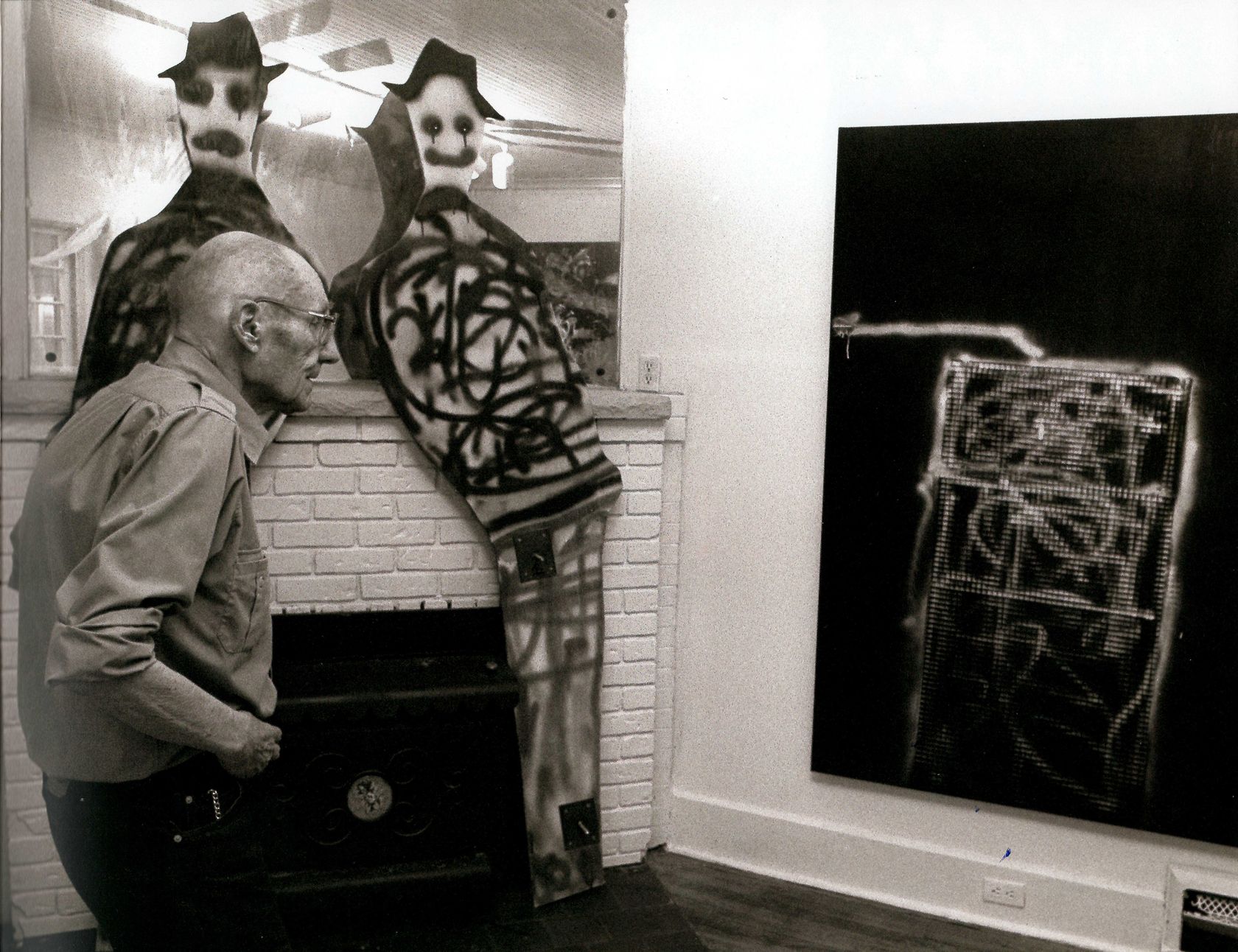
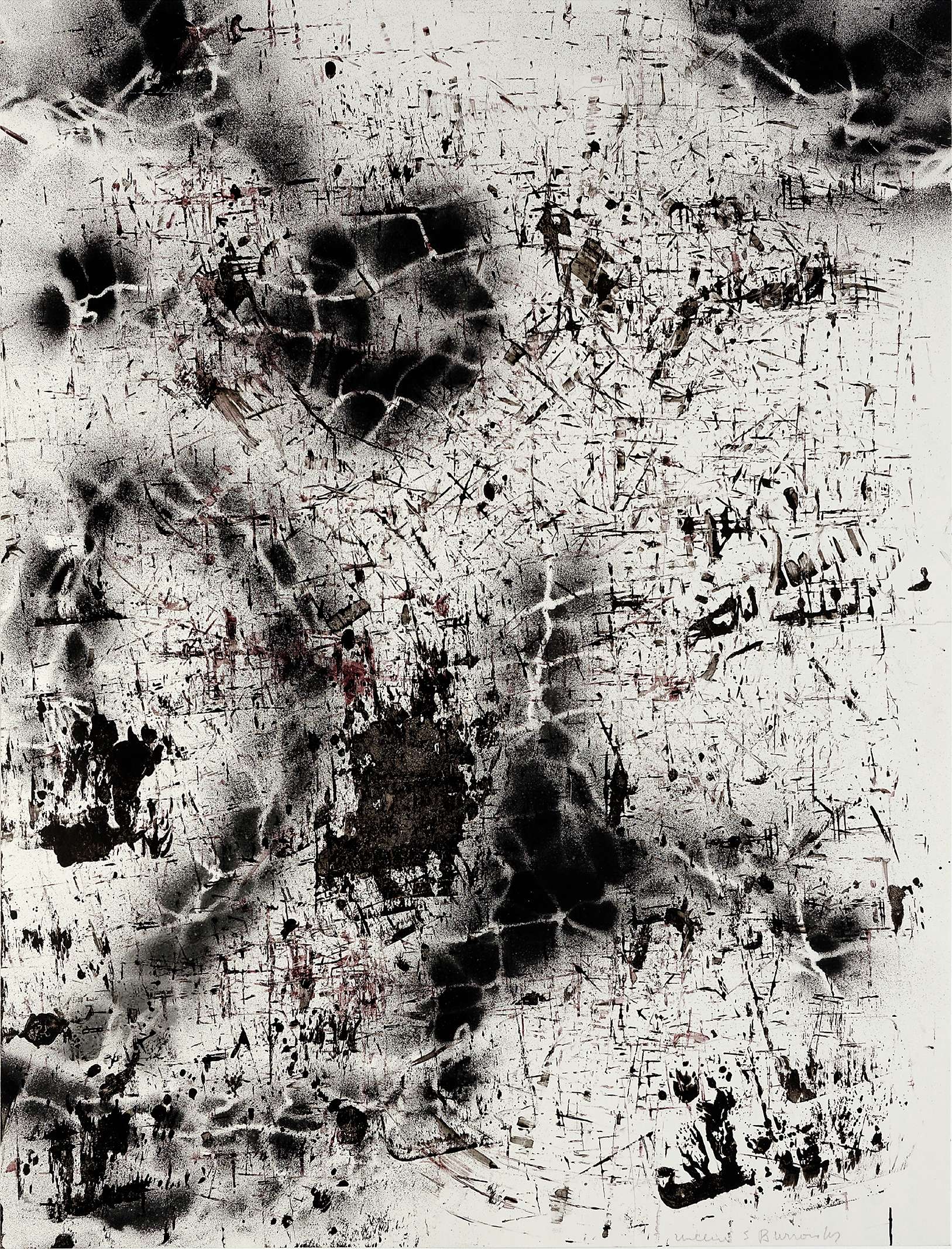
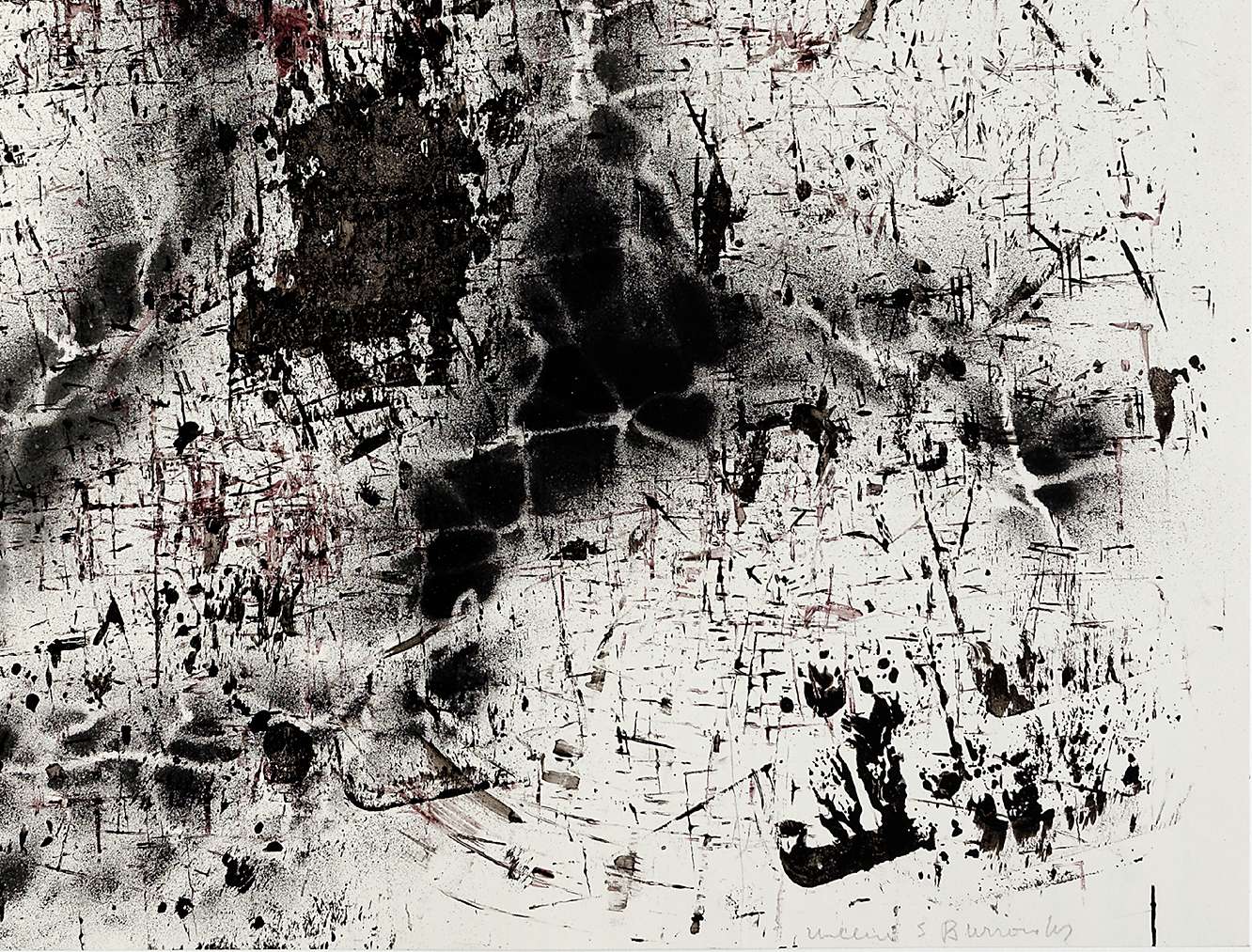
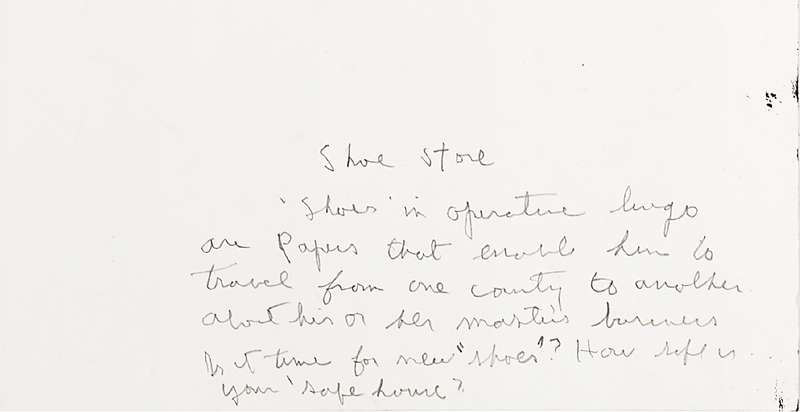
- William S. Burroughs
- Shoe Store (shoes in operative lingo are papers that enable him to travel...) , 1995
- Ink and spray paint on paper
-
- 77 ×
- 63 × cm
- 30 3/8 ×
- 24 6/8 × in
- framed
-
Description | Description:
Shoe store
« Shoes » in operative lingo are papers that enable him to travel from one county to another about his or her master’s barriers.Is it time for new « shoes »? How safe is your « safe home »?
Born in 1994, Oli Epp lives and works in London. His paintings are autobiographical; sometimes confessional, sometimes irreverent and frequently handled with a humorous sense of pathos. Oli Epp focuses on situations that either involve him or others, in public and private moments that pass by as unremarkable, at a glance. But documenting these unreported tragedies in paint is, for him, an act of discovery. He wants his imagery to feel familiar to as many people as possible; to draw out the ridiculous comedy of certain shared rituals and behaviours, by economizing on the essence of the situation and creating simplified humanoid characters, which lend a sort of parody of the real world in the way that cartoons do. These avatars have oversized heads and are hermetically sealed by an absence of facial features, which is an exaggerated reflection on human interaction in the post digital age - these figures appear idiotically isolated, but adorned with earpieces, branded items of clothing and objects that are important to consumption and communication.
Oli Epp uses the visual language of branding and interplay between graphic and painterly surfaces to create optical confusion, echoing the way that our real and digital lives are merged.
Graduated from the City & Guilds of London Art School in 2017, Oli Epp has received numerous awards and residencies. In 2018, Semiose organised his first gallery solo exhibition.
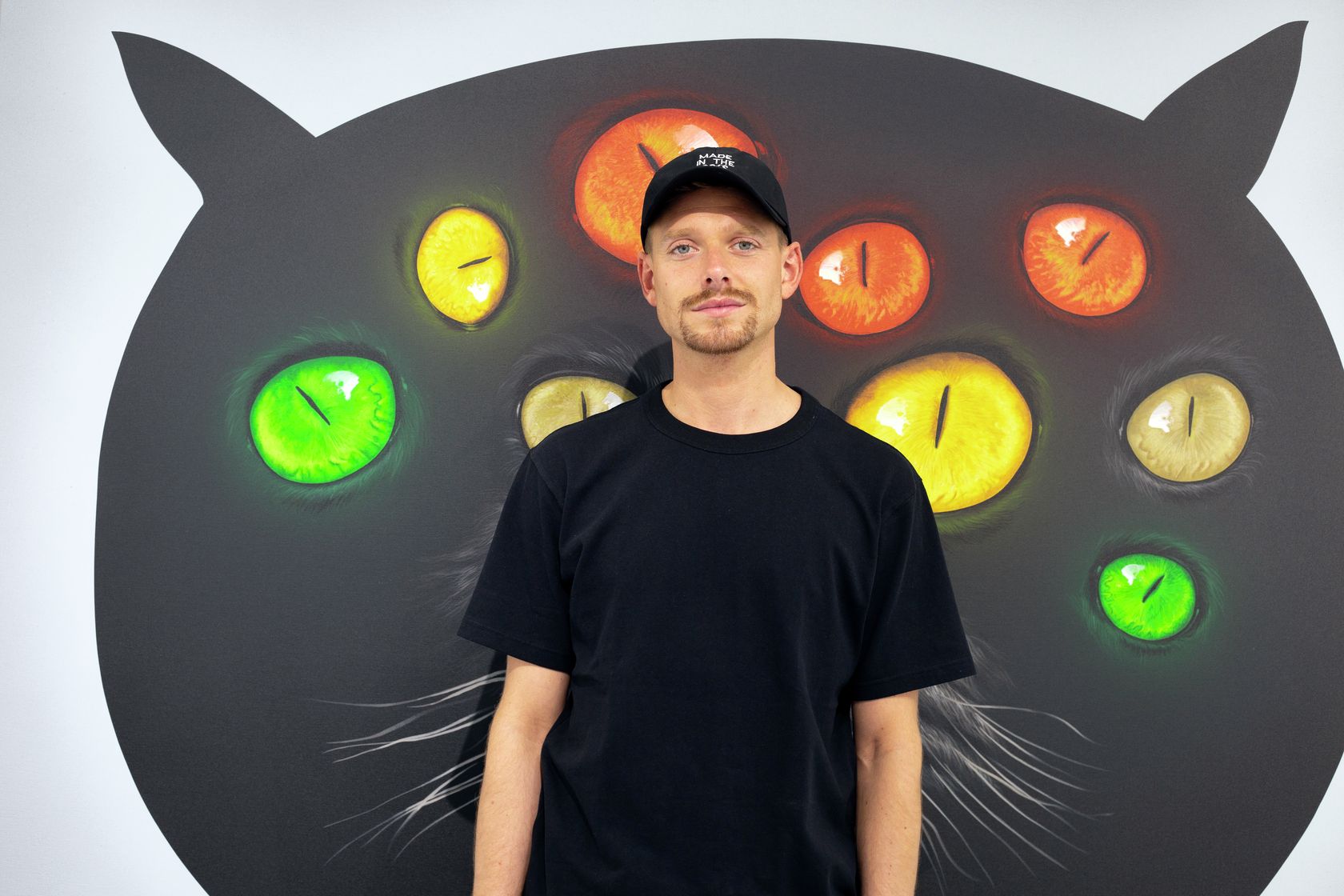
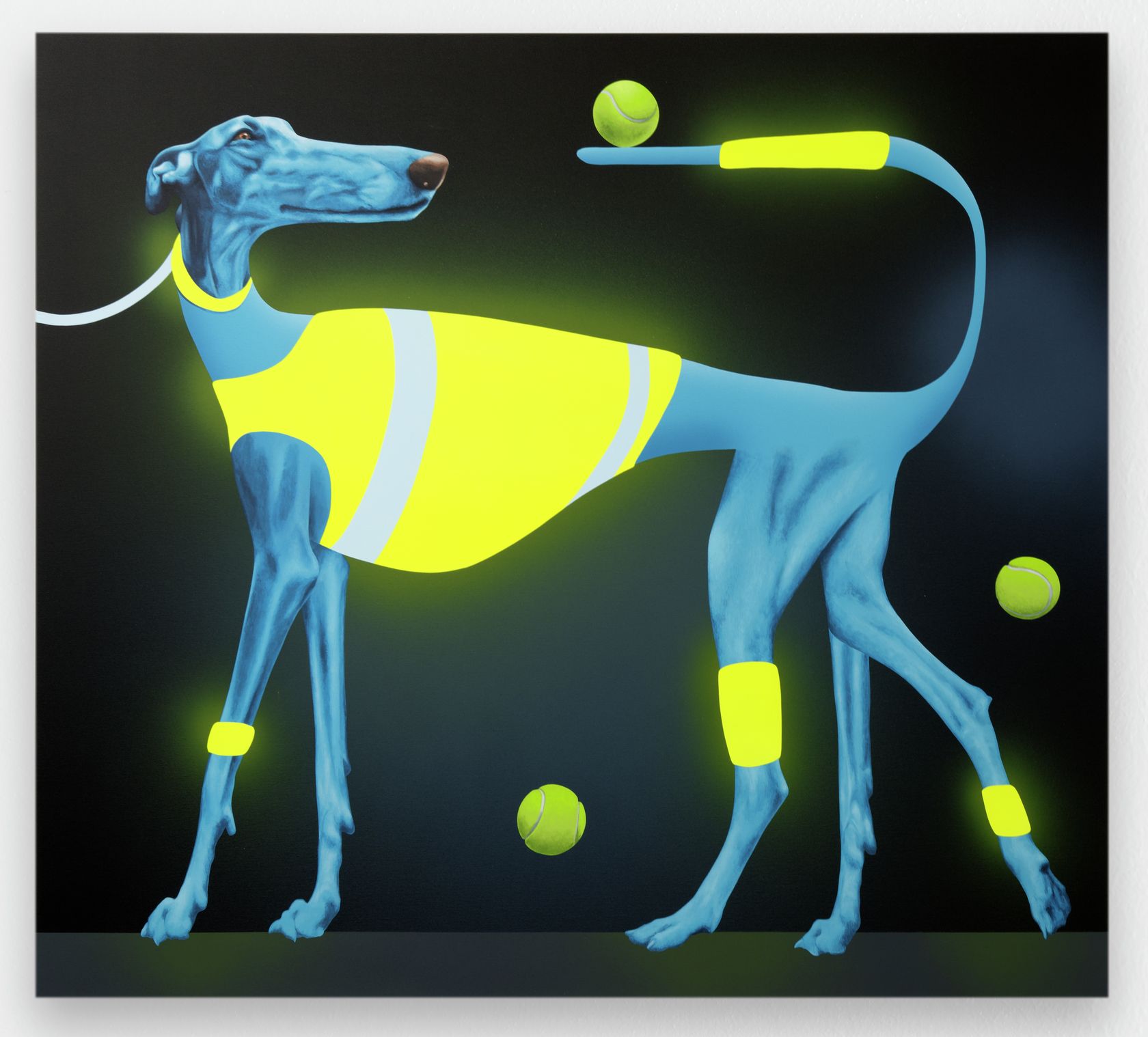
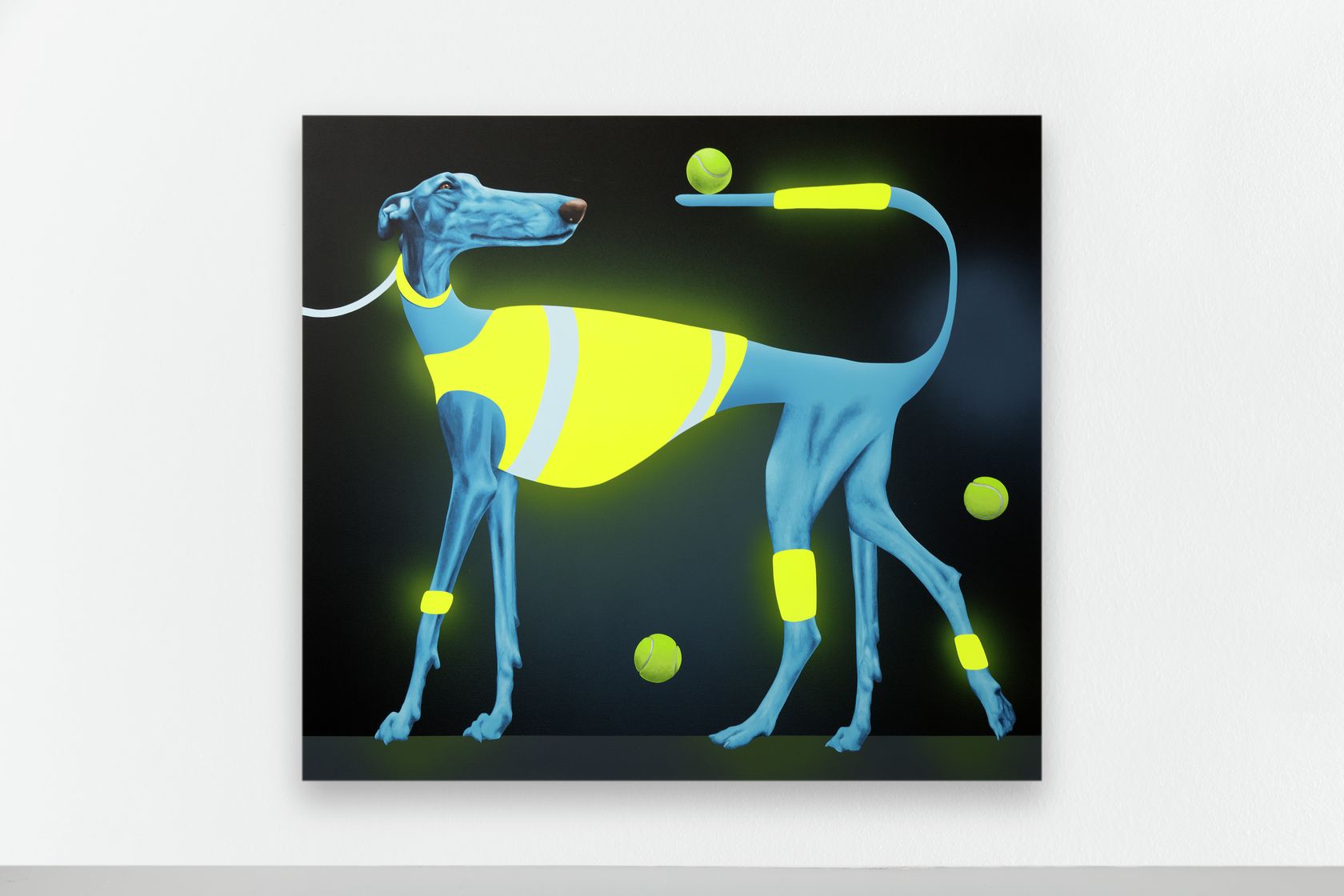
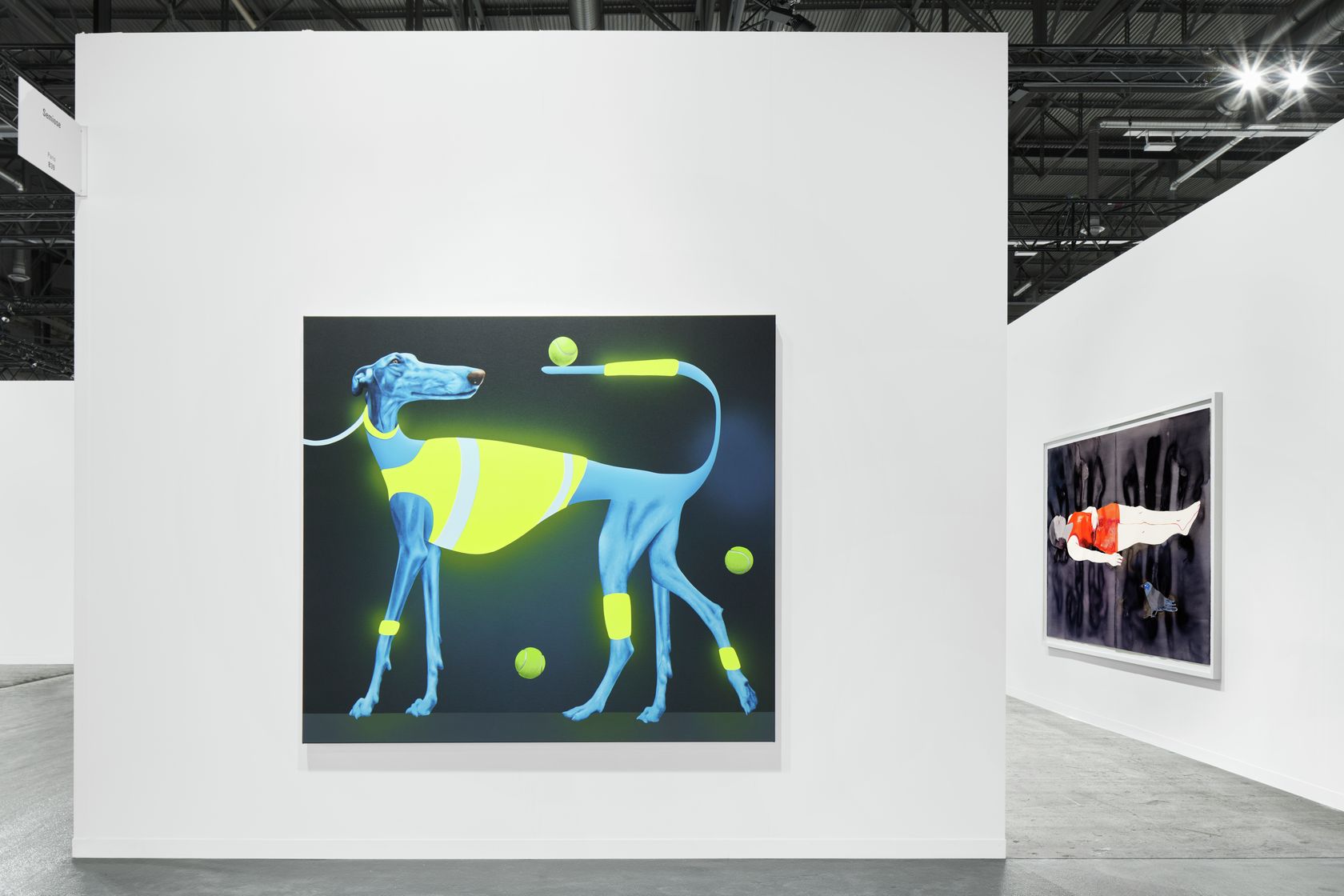
- Oli Epp
- Lighthound , 2023
- Oil and acrylic on canvas
-
More abstract than CoBrA, more colorful than Joyce Pensato, Aneta Kajzer’s work sits assuredly in the ranks of Bad Painting. It eschews the normative concepts of the image, alternating between seriousness and humor and daringly treading the borderline between beauty and ugliness. Her deformed, diverse and sometimes-contradictory figures allow the spectator some insight into the artist’s social preoccupations: it is of no consequence if some things remain unresolved, as long as they exist. Her artistic process begins with her choice of colors and strokes, from which at first transitory forms emerge that constantly evolve before finally taking on their definitive shapes. In constant dialog with the motifs that appear on her canvases, Kajzer alternates between planned and intuitive gestures. She creates conflicting arrangements between abstraction and figuration, combining contradictory forms of expression. Often a perfectly placed comma of paint resolves the conundrum of the image as a whole, making full use of the phenomena of pareidolia and suggestive association.
Aneta Kajzer was born in 1989 in Katowice in Poland and lives and works in Berlin. She graduated from the Kunsthochschule Mainz and was awarded a residency at the Künstlerhaus Bethanien in Berlin. In 2018, she participated in the Goldrausch Künstlerinnenprojekt, a development program for female visual artists. Her work is regularly exhibited, particularly in shows dedicated to the contemporary rejuvenation of German art such as Now ! Painting in Germany Today in Deutschland, shown at the Deichtorhallen Hamburg, Kunstmuseum Bonn, Kunstsammlung Chemnitz and Museum Wiesbaden in 2019-2020. She has also enjoyed numerous solo exhibitions, most notably at the Conrads Gallery in Düsseldorf, the Künstlerhaus Bethanien and the Institut für Moderne Kunst in Nuremburg.
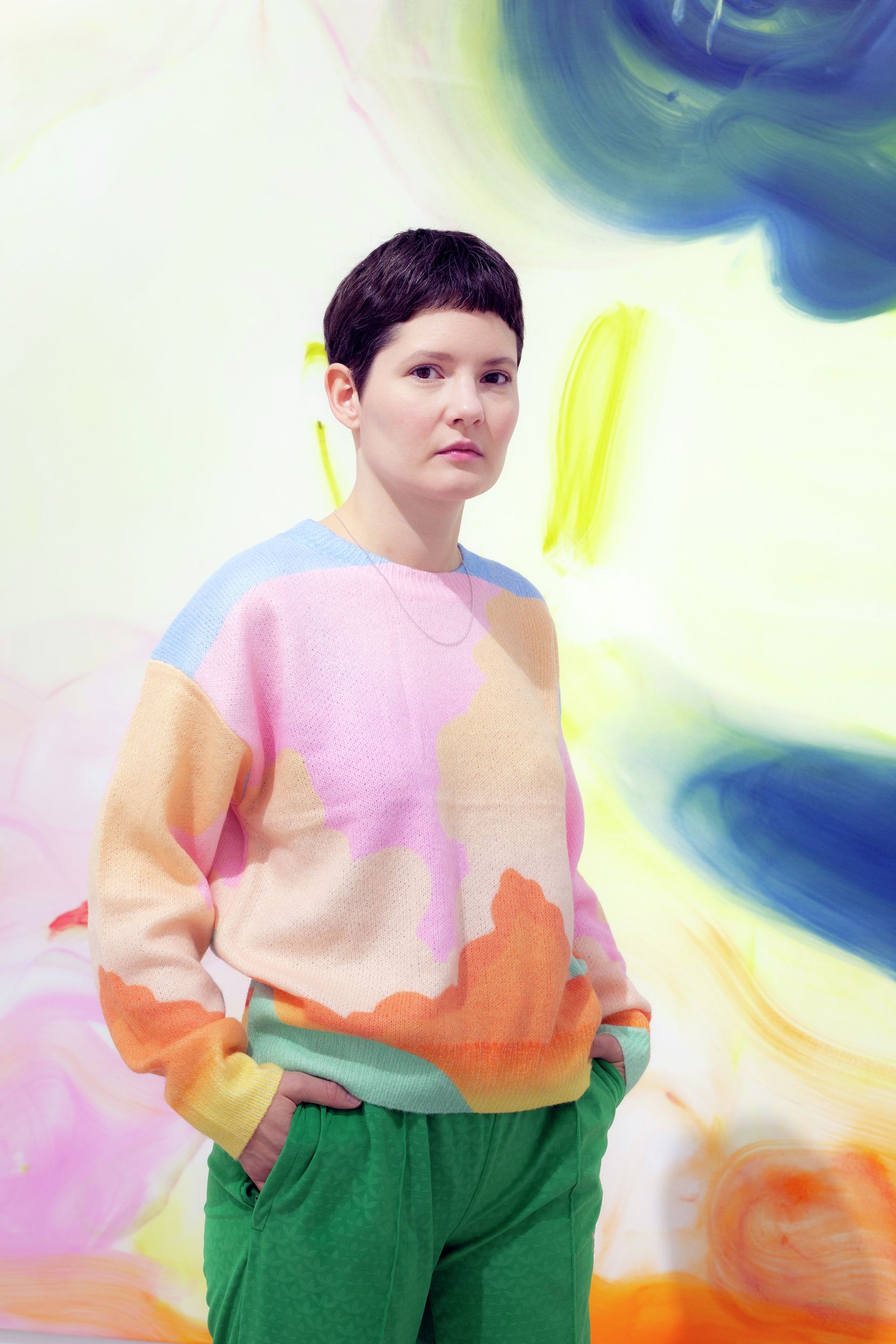
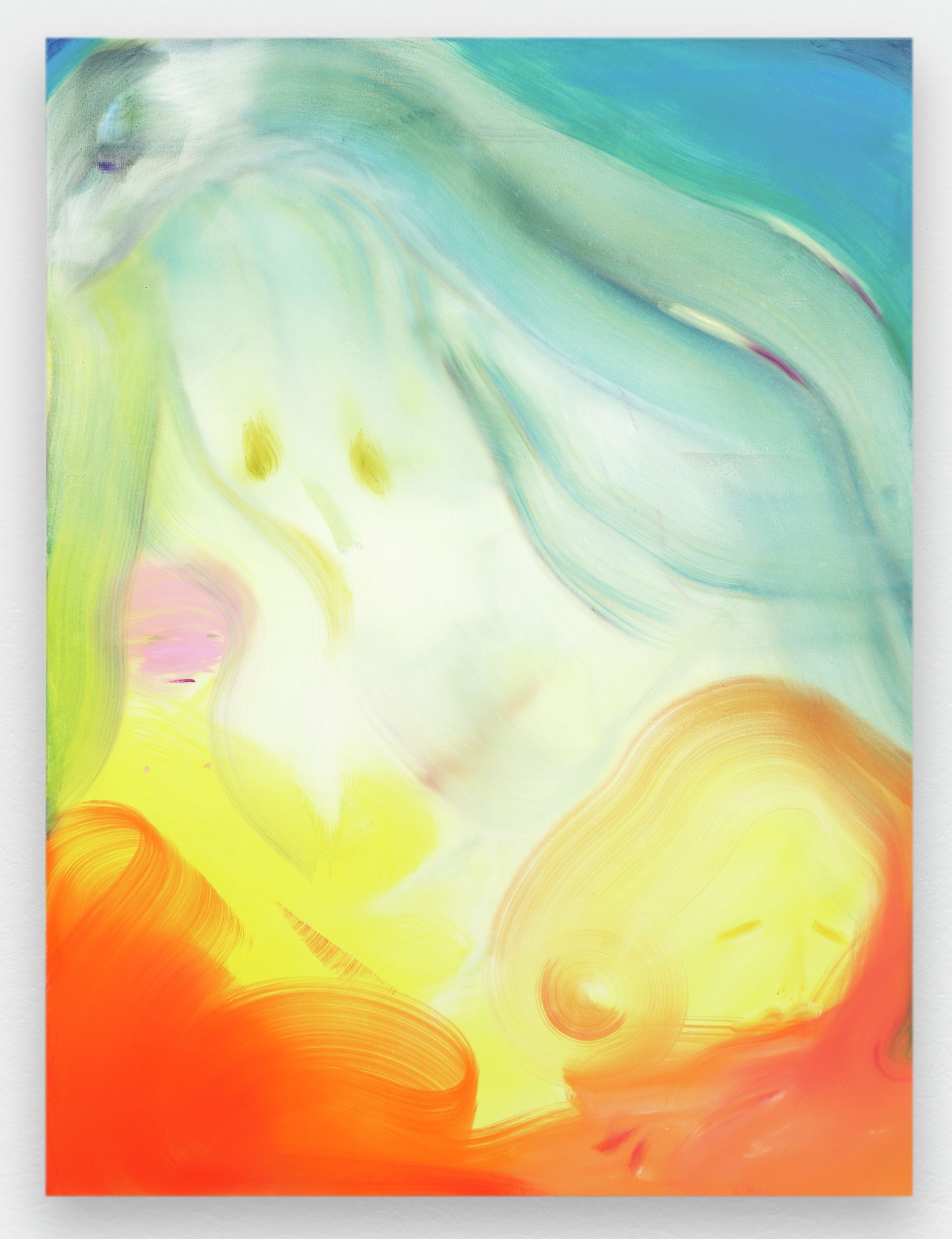
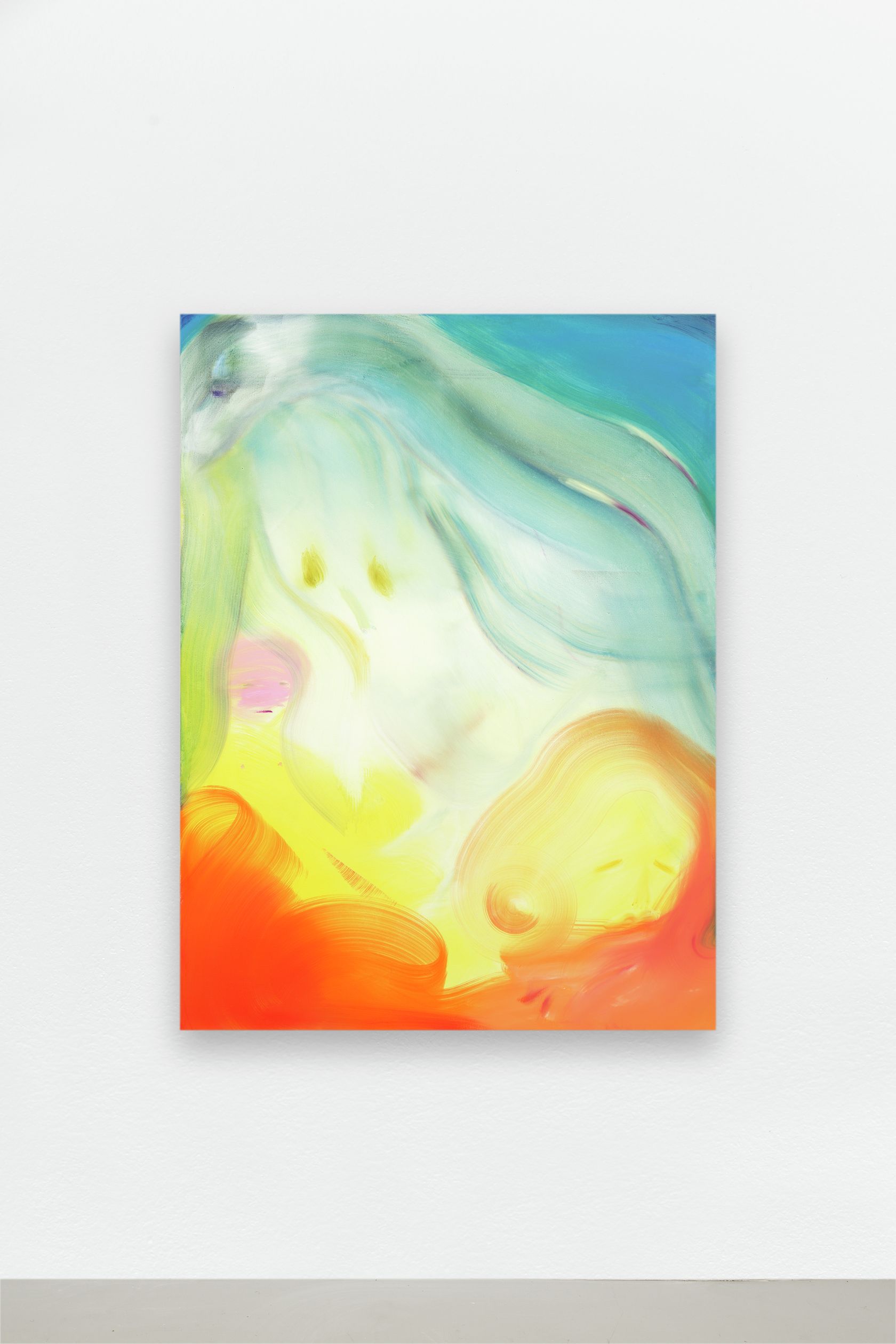
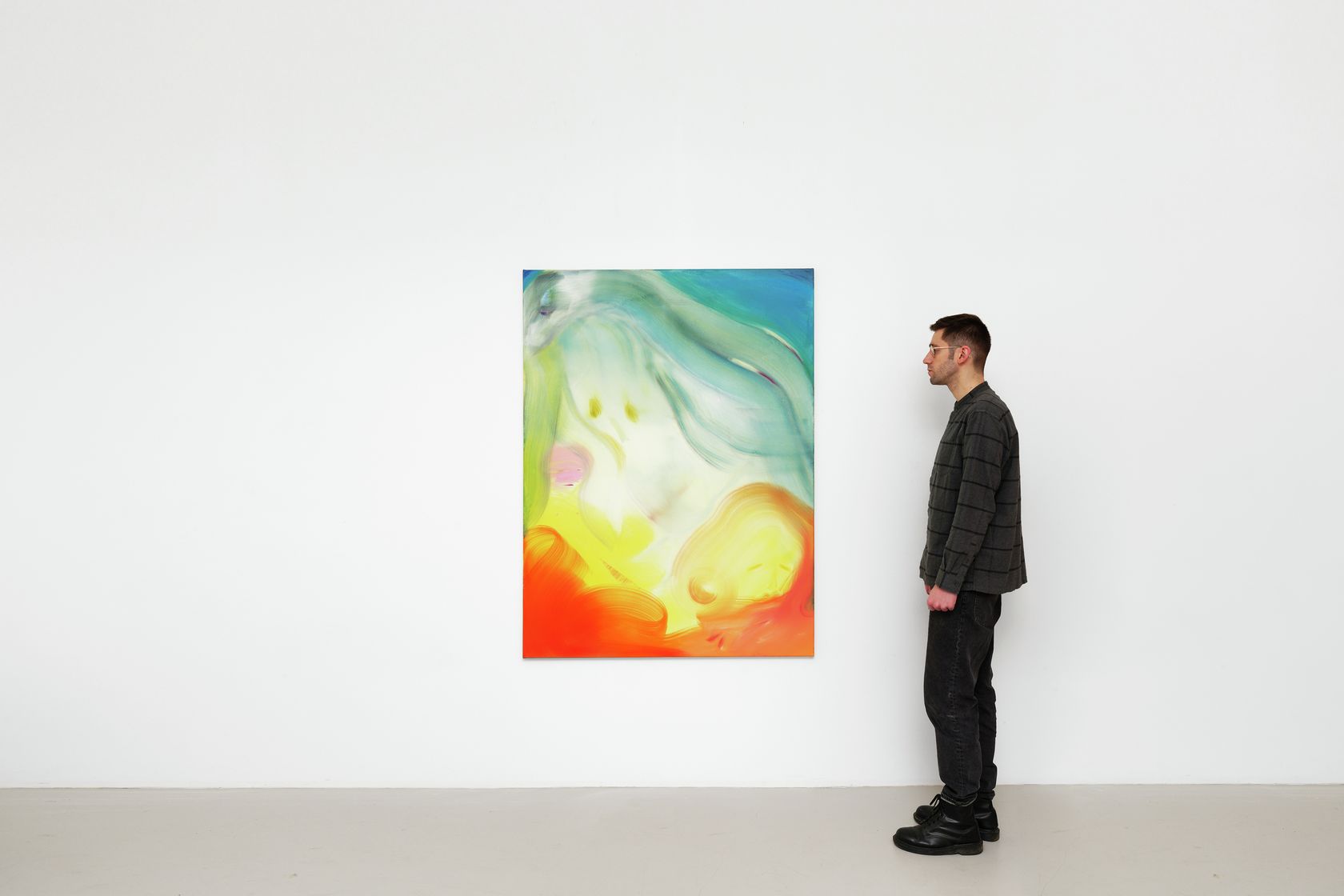
- Aneta Kajzer
- Party Animals , 2021
- Oil on canvas
-
- 160 ×
- 120 × cm
- 63 ×
- 47 2/8 × inches
Since the 1990s, Françoise Pétrovitch has produced one of the most powerful bodies of work on the French art scene. Amongst the numerous media she has explored—ceramics, glass, ink washes, painting, print and video—drawing retains pride of place. In constant dialog with the artists who have preceded her, she has been able to measure herself against the incontrovertible motifs of “high art”—Saint Sebastian, still lifes, etc. Pétrovitch’s art reveals an ambiguous world, willingly transgressive, playing with conventional boundaries and eluding any interpretation. Intimacy, fragments of life and disappearance, alongside the themes such as the double, transition and cruelty run through her work, which is inhabited by animals, flowers and beings, and whose atmosphere fluctuates between light and dark, rarely leaving the spectator unmoved.
She has enjoyed numerous solo exhibitions both in France and abroad. The FHEL in Landernau (FR) hosted a major retrospective of her work and a monographic exhibition is dedicated to her at the BnF, Paris in 2022. In 2018, she was the first contemporary artist to be awarded a solo exhibition at the Louvre-Lens. Over the past few years, Pétrovitch has produced a number of monumental wall drawings and large format ensembles, for the Galerie des Enfants at the Centre Pompidou, the West Bund Museum, Shanghai or for the Ballets du Nord Company. Her works are included in many private and public collections, most notably the Centre Pompidou, Paris (FR), the Voorlinden Museum, Wassenaar (NL), the National Museum of Women in the Arts, Washington D.C. (US), the Musée Jenisch, Vevey (CH), the Musée d’Art Moderne et Contemporain in Saint-Etienne (FR) and in Strasbourg (FR), the MAC VAL (FR) and numerous regional art centers throughout France as well as the Salomon and Guerlain Foundations.
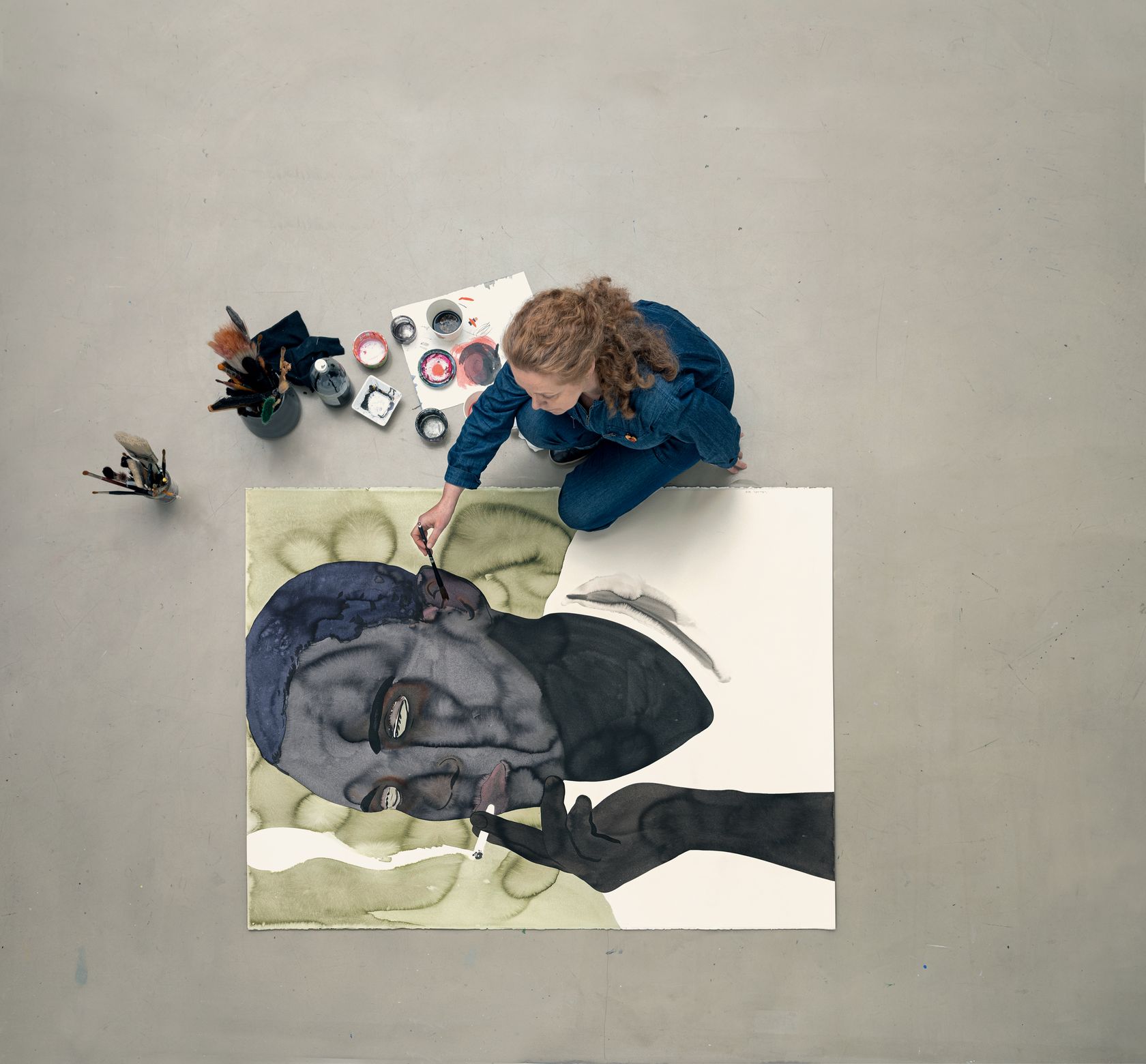
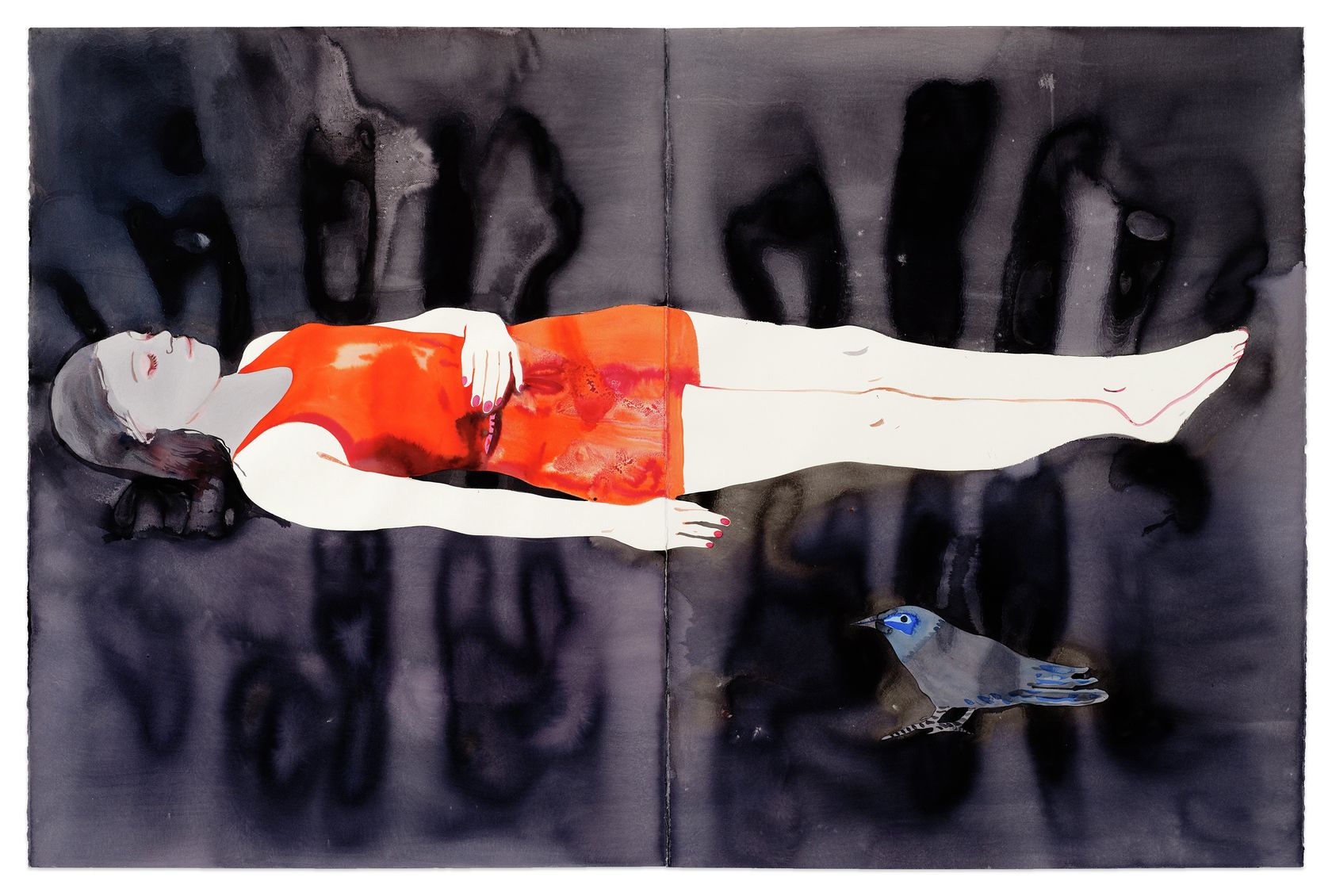
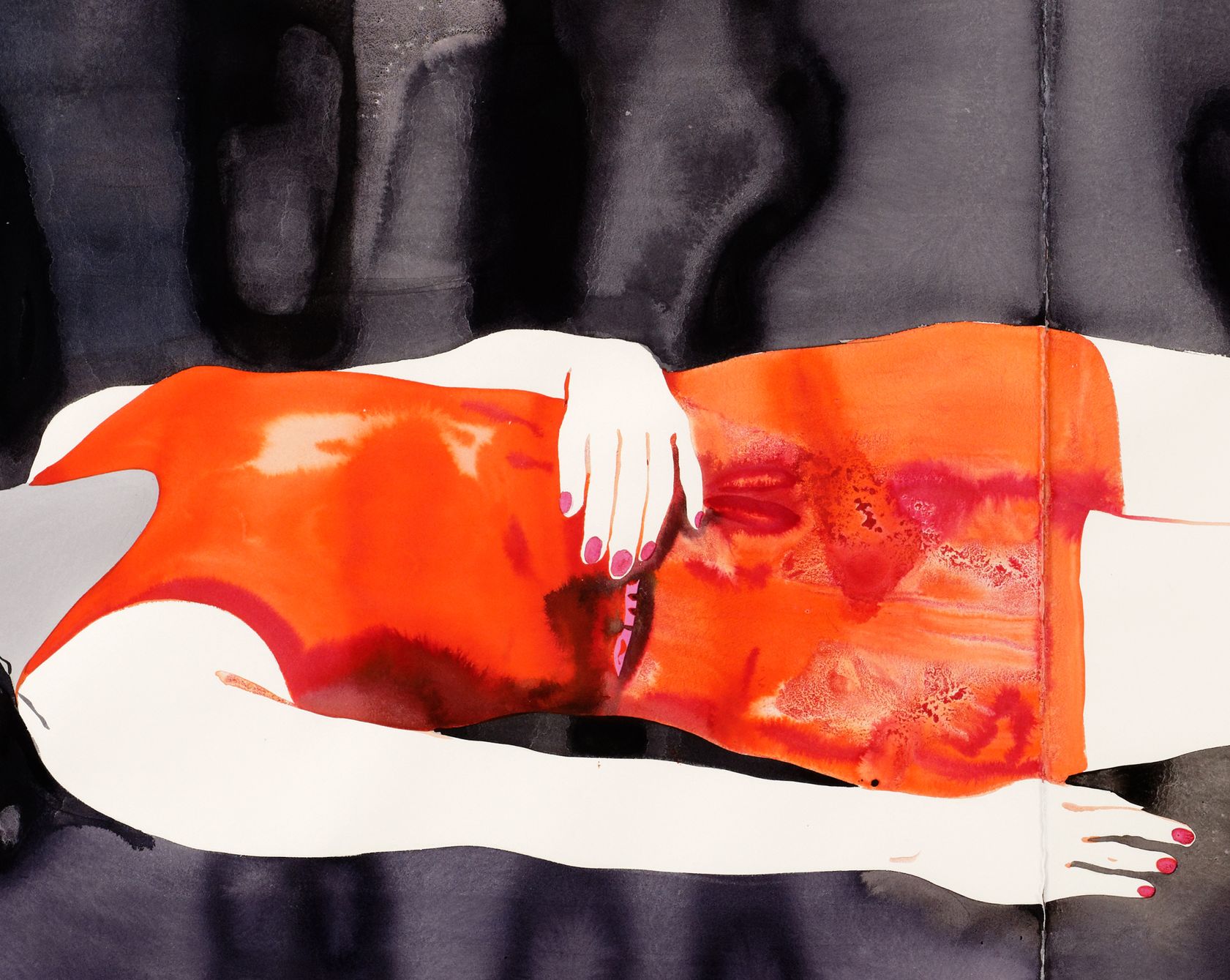
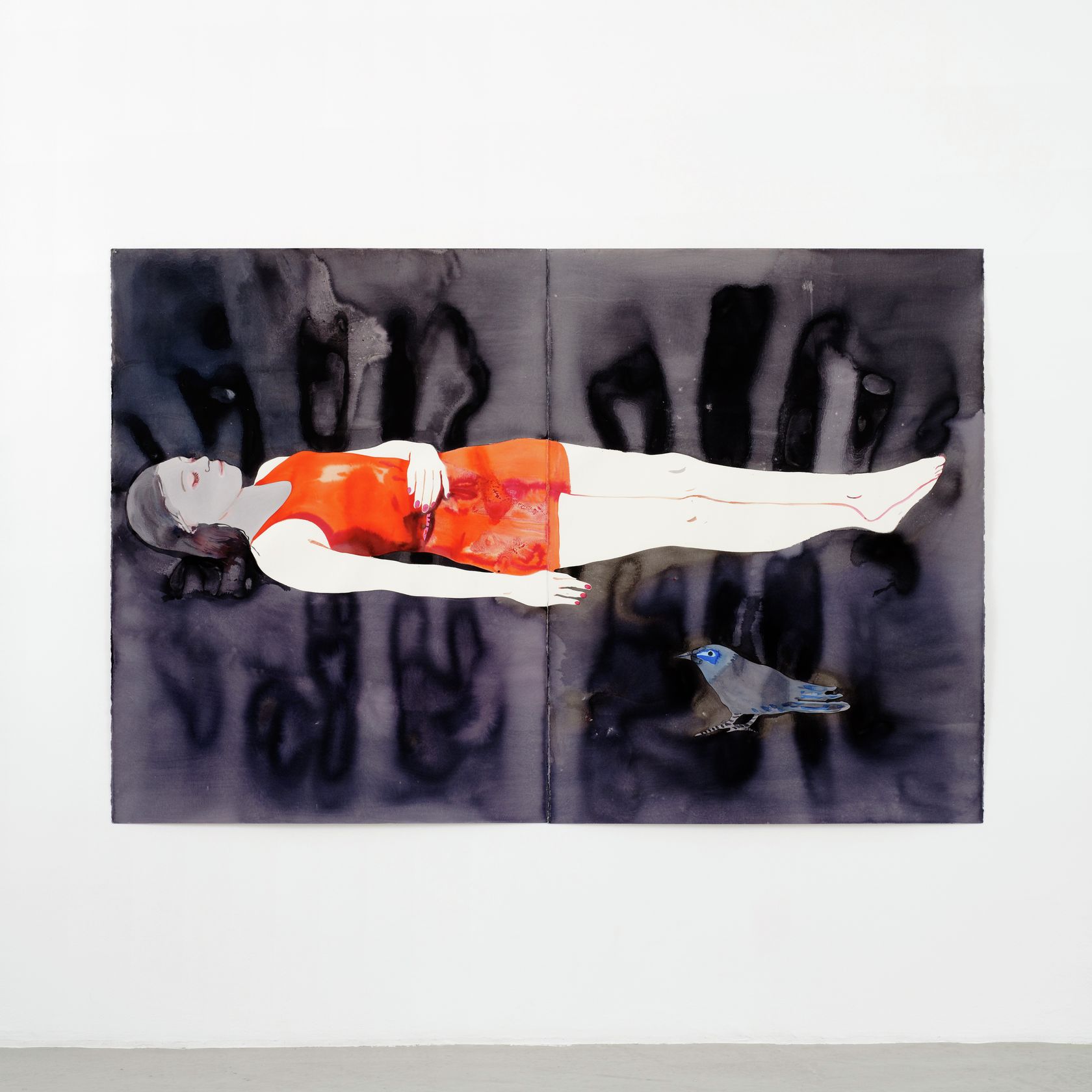
- Françoise Pétrovitch
- Étendu , 2022
- Ink wash on paper
-
- 160 ×
- 240 × cm
- 63 ×
- 94 1/2 × inches
- unframed
- 176.4 ×
- 258.2 × cm
- 69 1/2 ×
- 101 5/8 × in
- framed
Stefan Rinck’s stone figures form a motley and comical community of, for the most part, animals, chimeras and monsters. They wear costumes and masks; are endowed with particular symbols or characteristics, some bear the names of heroes of Greek mythology or of legend. Rinck’s sculpted figures make up a discordant but related assembly of non-humans: they come from elsewhere, an archaic imaginary world, woven from myths and legends. With his collection of fauna, the artist is exploring a comical, imaginary yet realistic vein, breathing new life into its iconography, using a technique typical of the Middle Ages: sculpting his figures directly from stone.
Rinck’s sculptures remind us of the figures of Roman art, which populate the columns and tympana of churches. They share the same morphology and style, the hybrid aspect of the chimera and monster. These are grotesque figures, in which we recognize the vitalist comedy typical of medieval realism which could be observed during the parades of jesters and buffoons at religious and popular festivities. Yet if the Middle Ages seem to color Rinck’s art, its frame of reference in fact crystalizes around a number of “Gothic” obsessions of the Romantic kind: a taste for mythology and folk tales, for different epochs and cultures for the fantastic or figures of hubris and excess.
Stefan Rinck’s work has been subject to many exhibitions in Athens, Berlin, Brussels, Los Angeles, Madrid, Munich, Paris and features in the collections of the Frac Corse, Corte, (FR), the CBK Rotterdam (NL) and the Museum De Hallen, Haarlem (NL). In 2018, the work The mangust of Beauvais is installed permanently in the city of Paris at 53-57 rue de Grennelle (Beaupassage). In 2019, Stefan Rinck is part of the 100 Sculptors of Tomorrow published by Thames & Hudson.
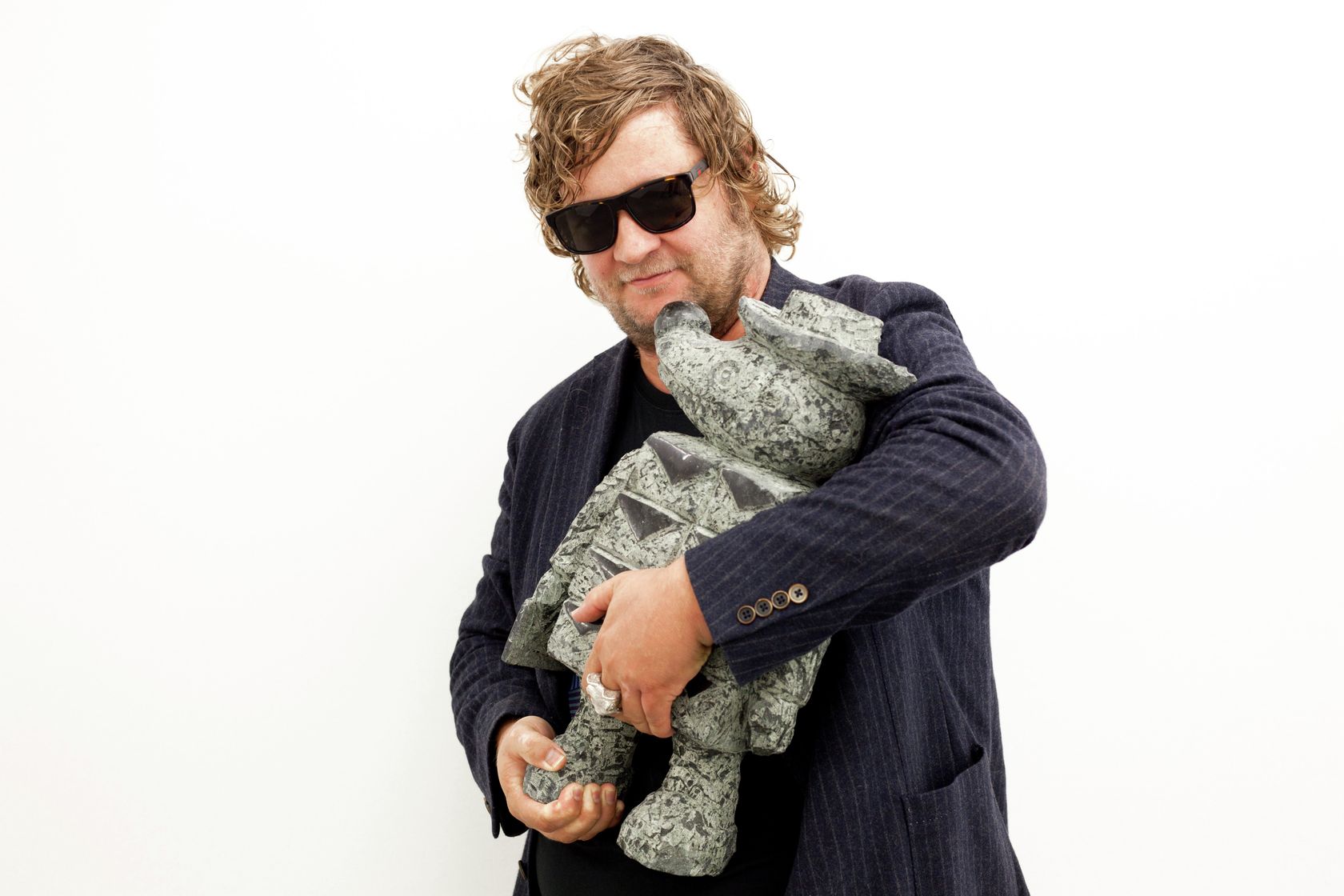
Moffat Takadiwa creates large format sculptures from materials found on garbage dumps, notably computer parts, plastic bottle-caps, toothbrushes and toothpaste tubes. After gathering great quantities of these small objects and sorting them by color and shape, the artist weaves these discarded scraps into rich wall hangings. Once suspended, these post-industrial fabrics, through their intricate beauty, acquire an aura of ritual or totemic artifacts.
Born in 1983, Moffat Takadiwa lives and works on the outskirts of Harare in Mbare, one of the largest recycling centers in the country and an important hub for the informal economy. Belonging to the post-independence generation, his work reflects his preoccupation with issues such as consumerism, inequality, post-colonialism and the environment. Since the earliest days of his artistic career, he has used his practice as a platform for the rehabilitation of his community, working with young local artists and designers, with a view to founding the world first artistic center based on the use of reclaimed materials.
Moffat Takadiwa has exhibited his works in the major institutions of Zimbabwe as well as abroad, most notably at the Craft Contemporary (US), during the exhibition organized by Jeffrey Deitch and Gagosian at the Moore Building in Miami (US), at the ARoS Kunstmuseumat, Aarhus (DK), the Jameel Arts Center, Dubai (AE), the MACAAL, Marrakesh (MA) and the Arnhem Museum (NL). His works are included in numerous public and private collections including the CNAP, Paris (FR), the FRAC Alsace (FR) The Fondation H, Antananarivo (MG), The Jameel Arts Center, Dubai (AE), The Arsenal Contemporary Art, Toronto (CA) and the CC Foundation, Shanghai (CN).
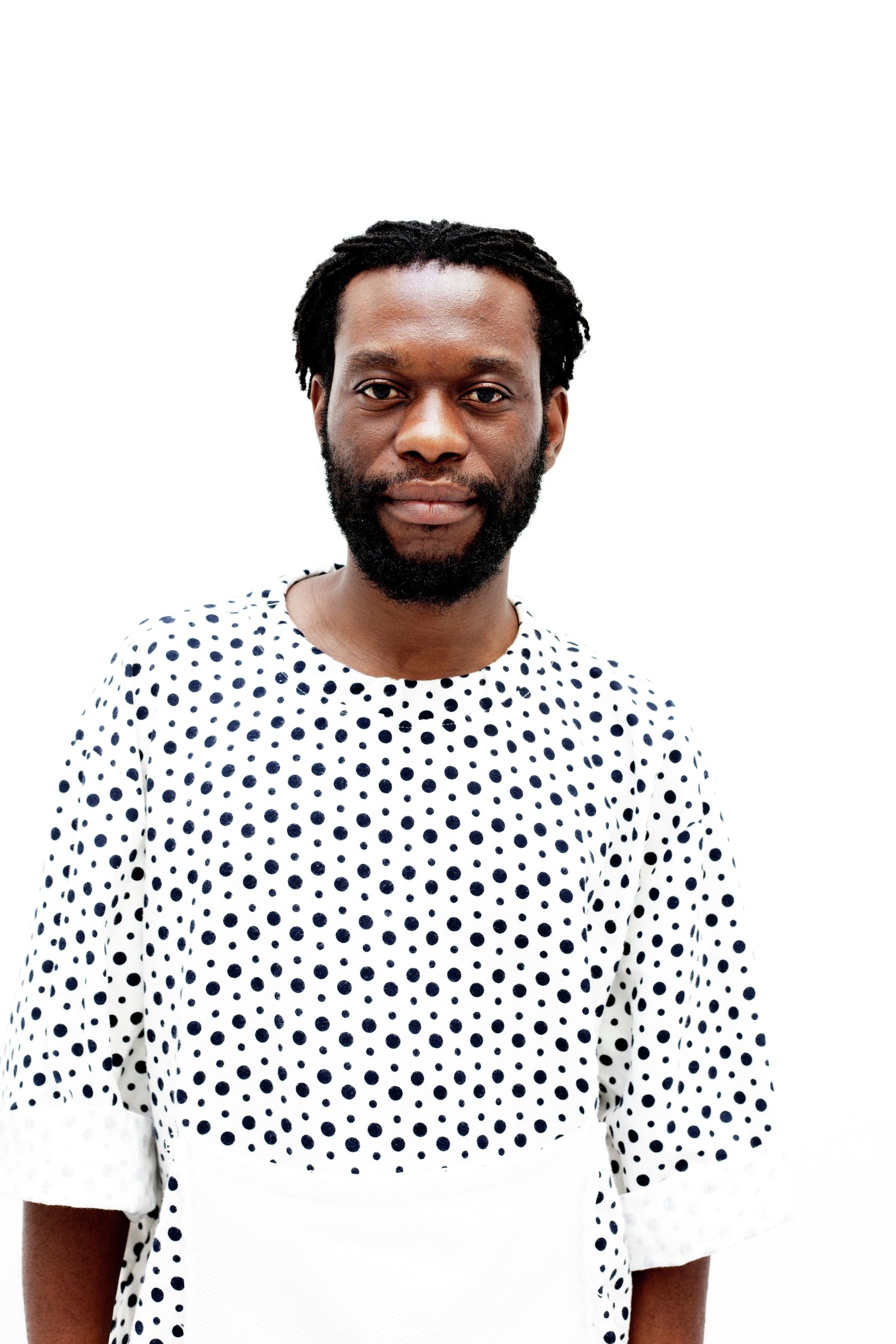
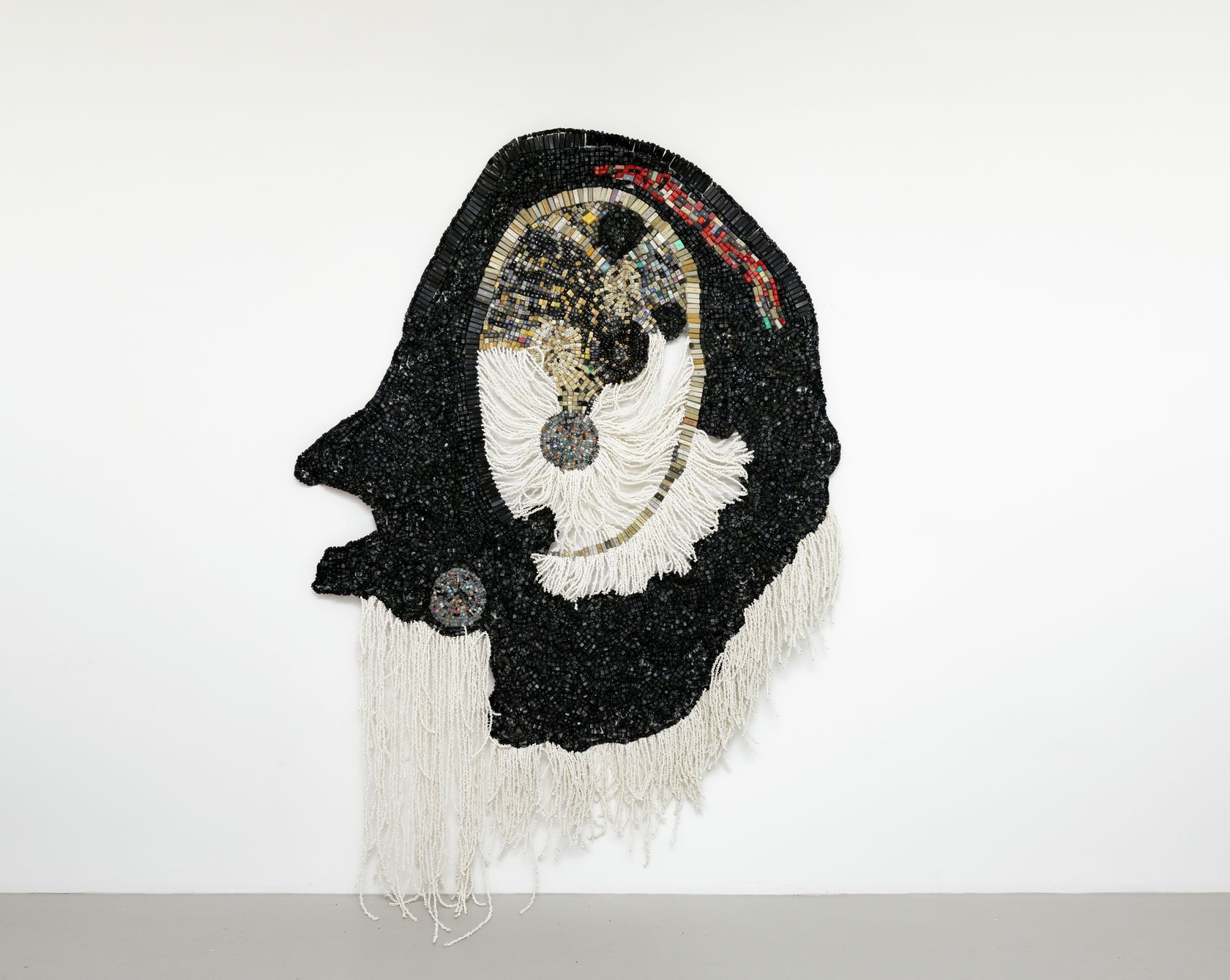
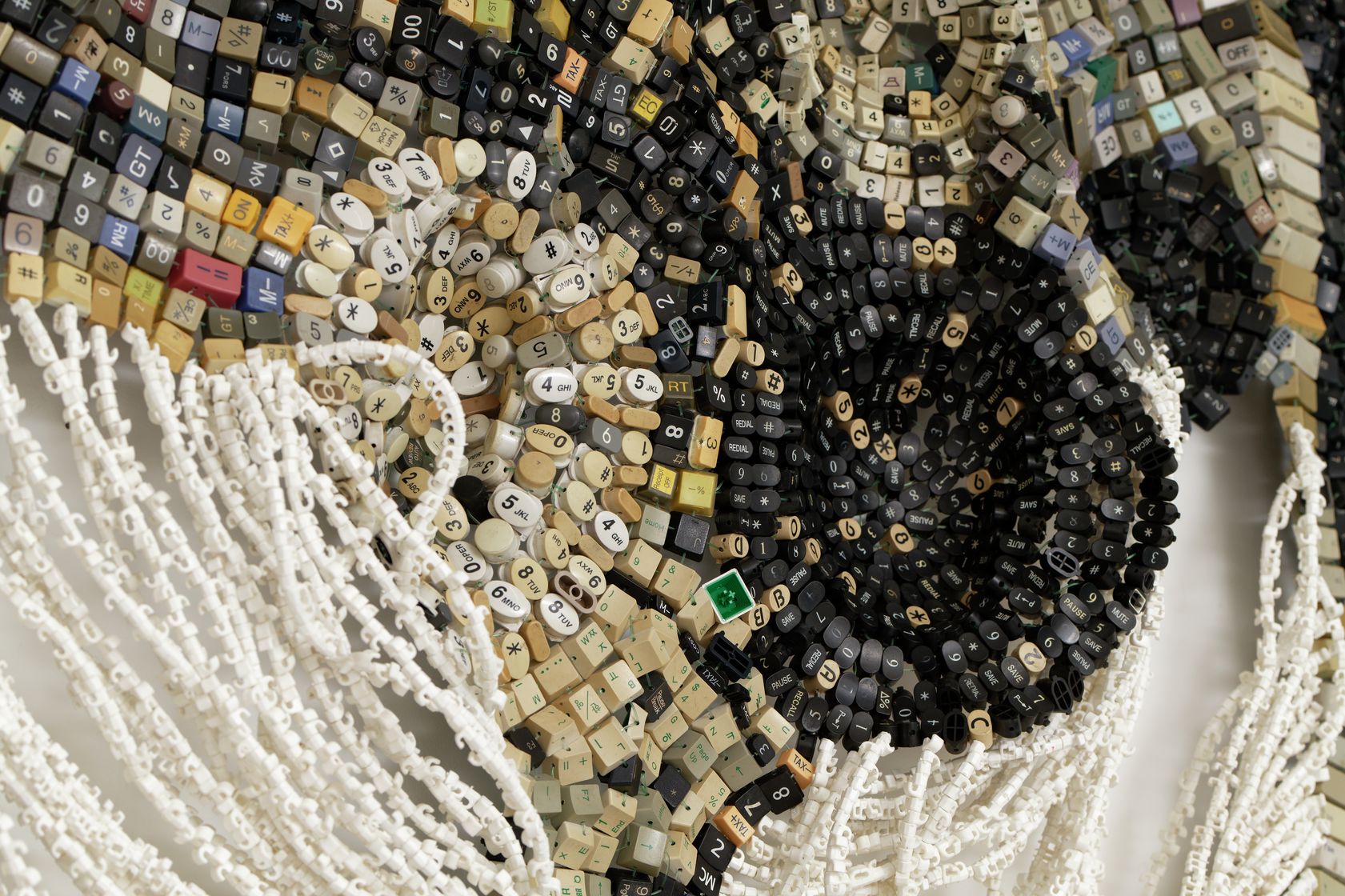
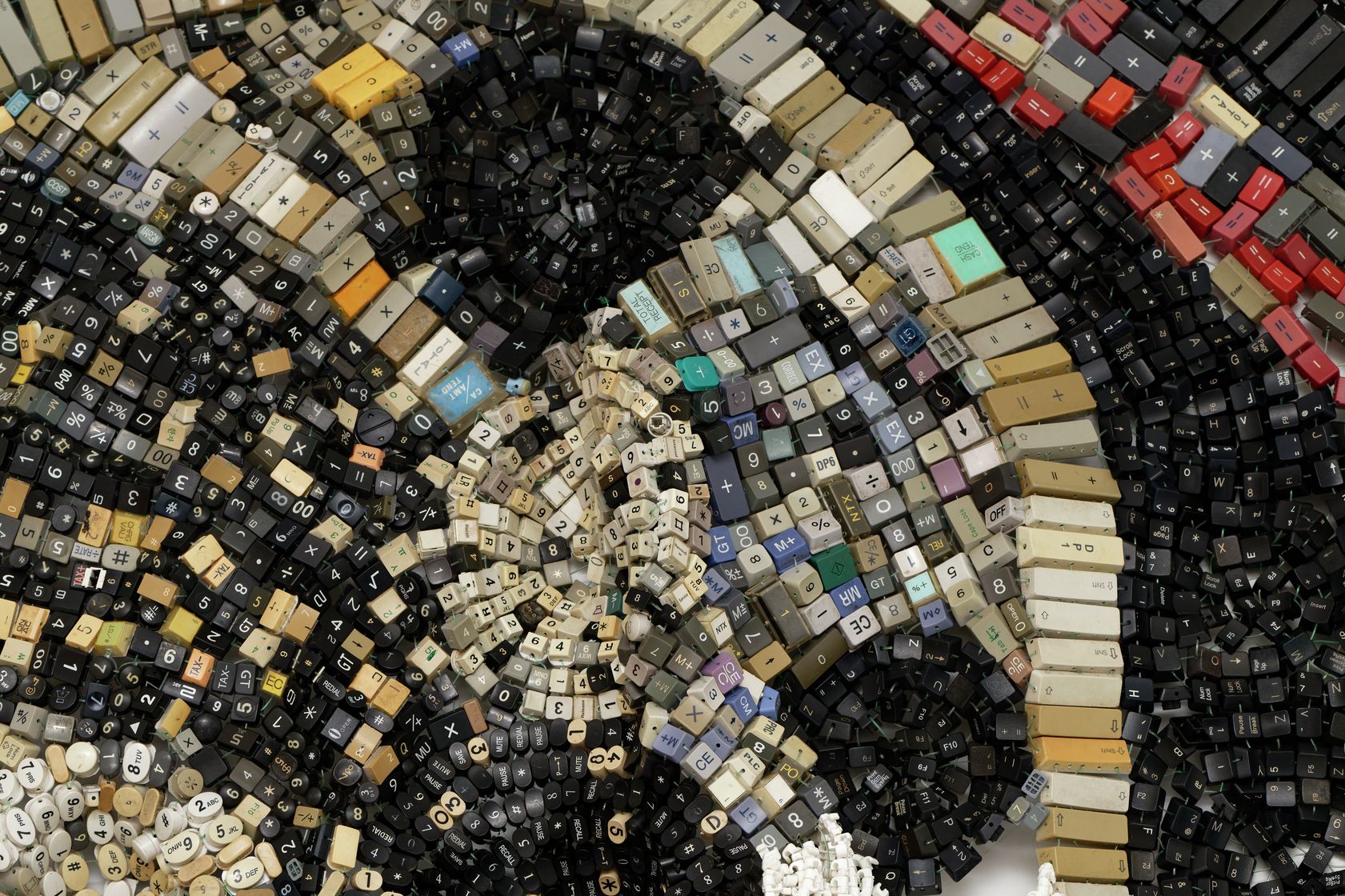
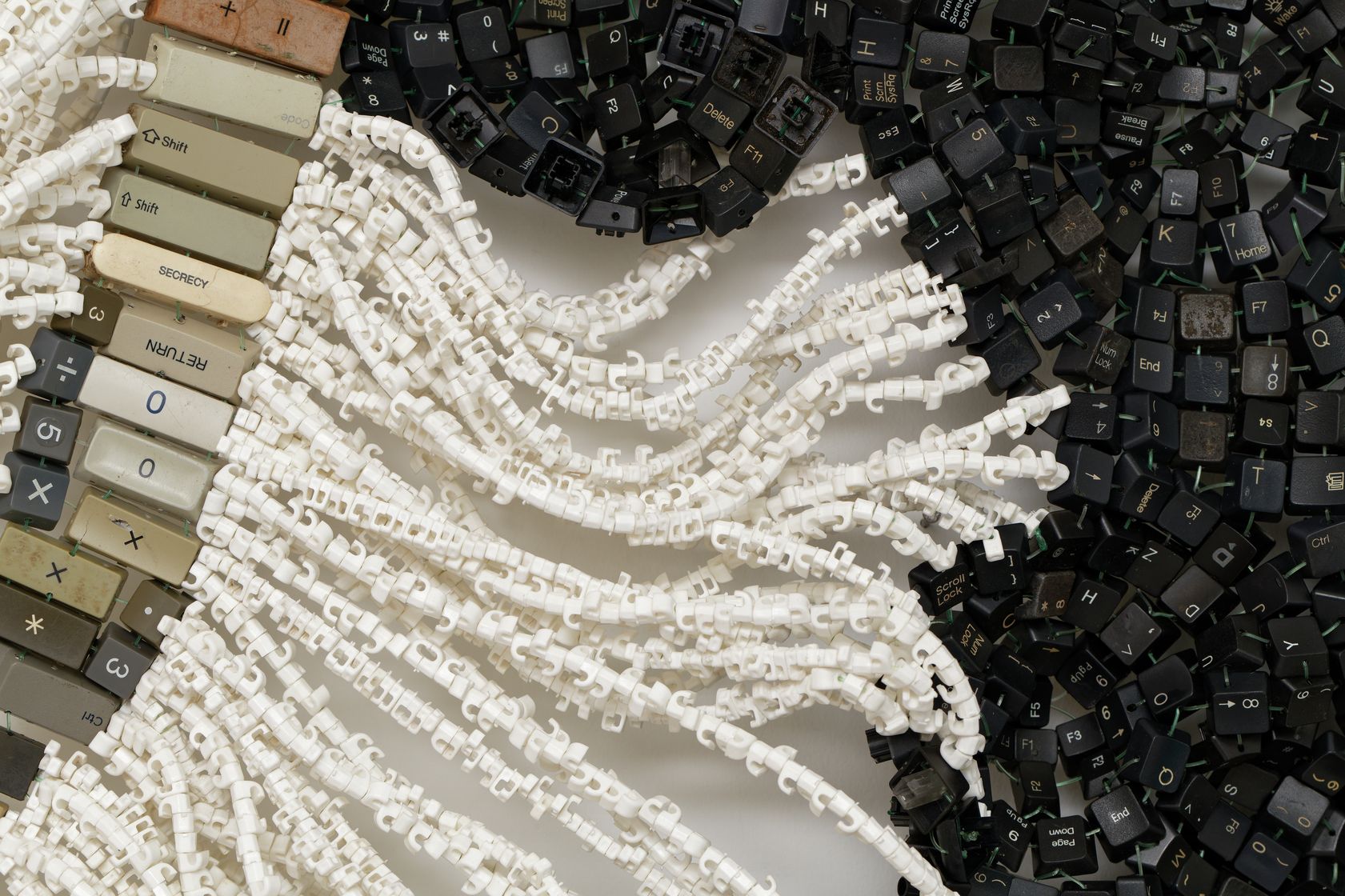
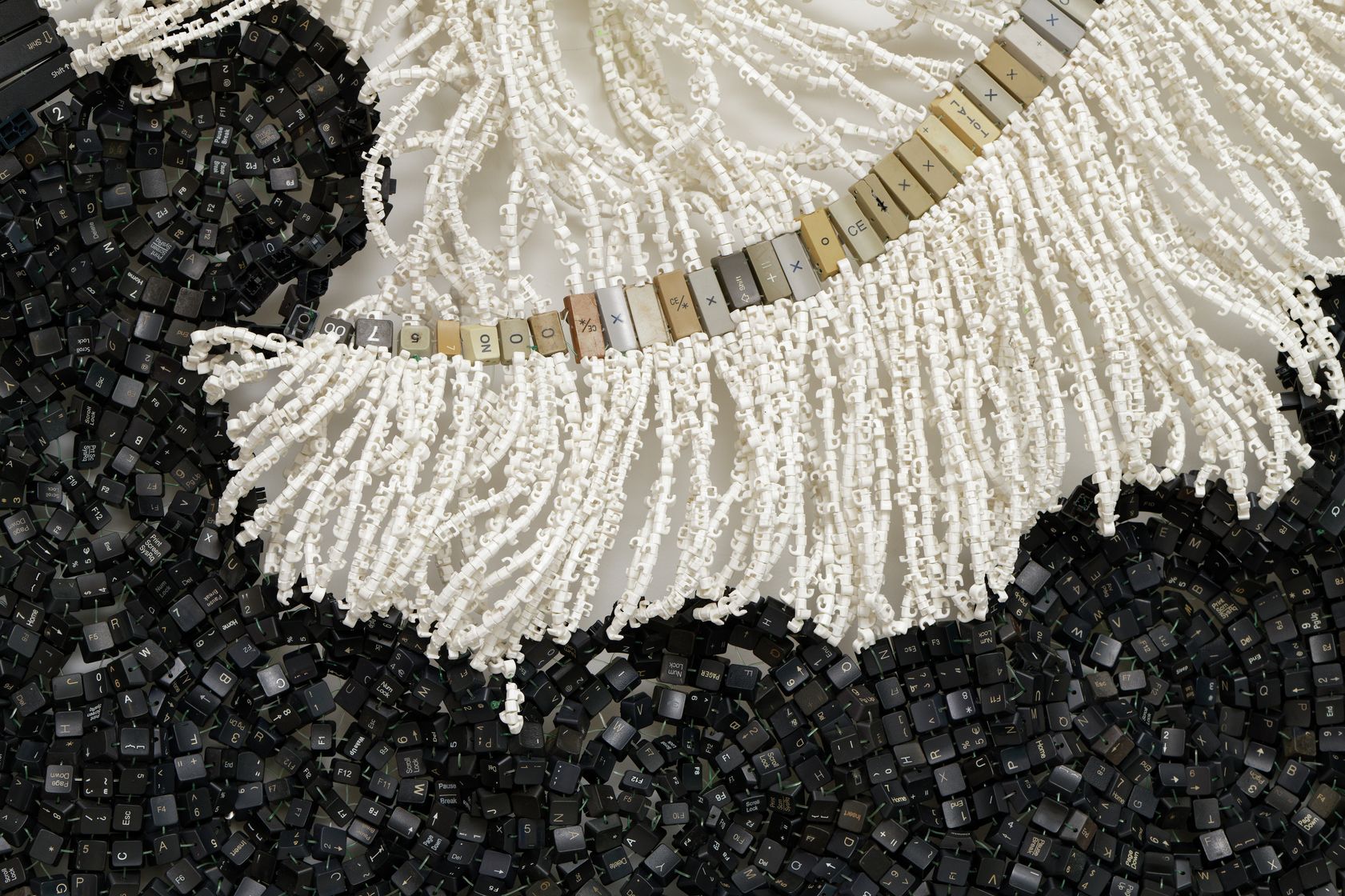
- Moffat Takadiwa
- The Brain Drain , 2022
- Computer, calculator and telephone keys, nail clippers
-
- 220 ×
- 270 ×
- 10 × cm
- 86 5/8 ×
- 106 5/16 ×
- 3 15/16 × inches
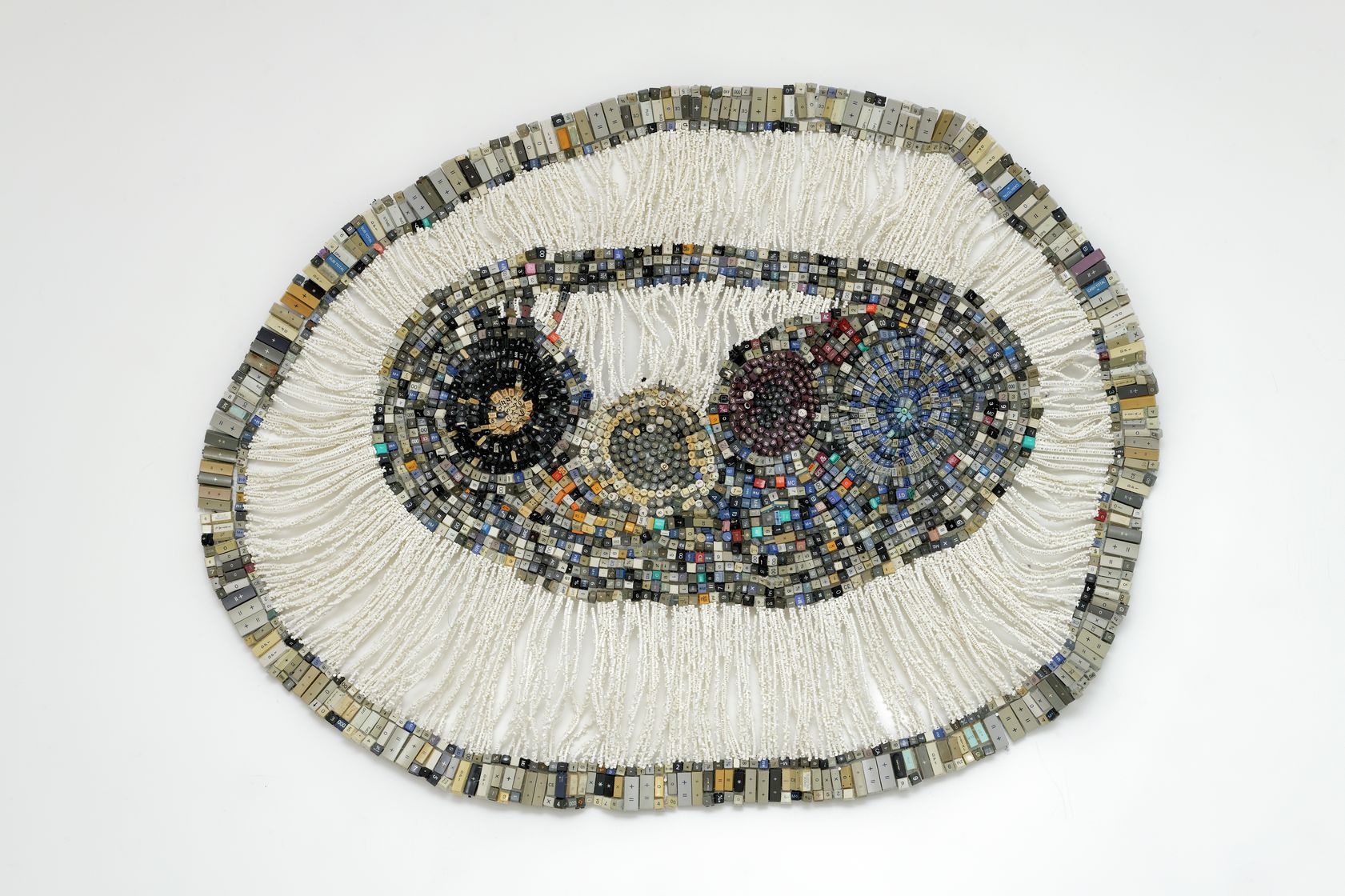
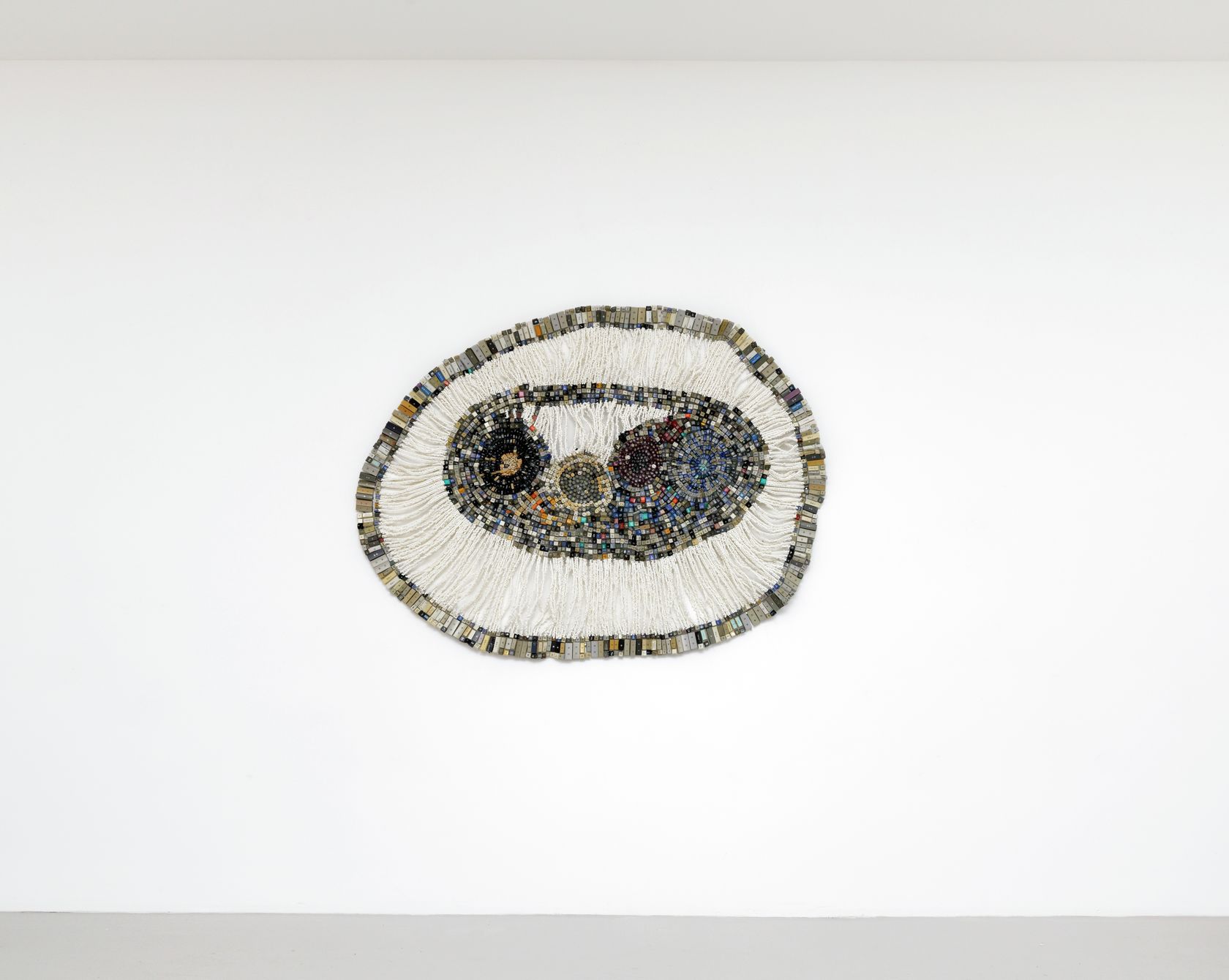
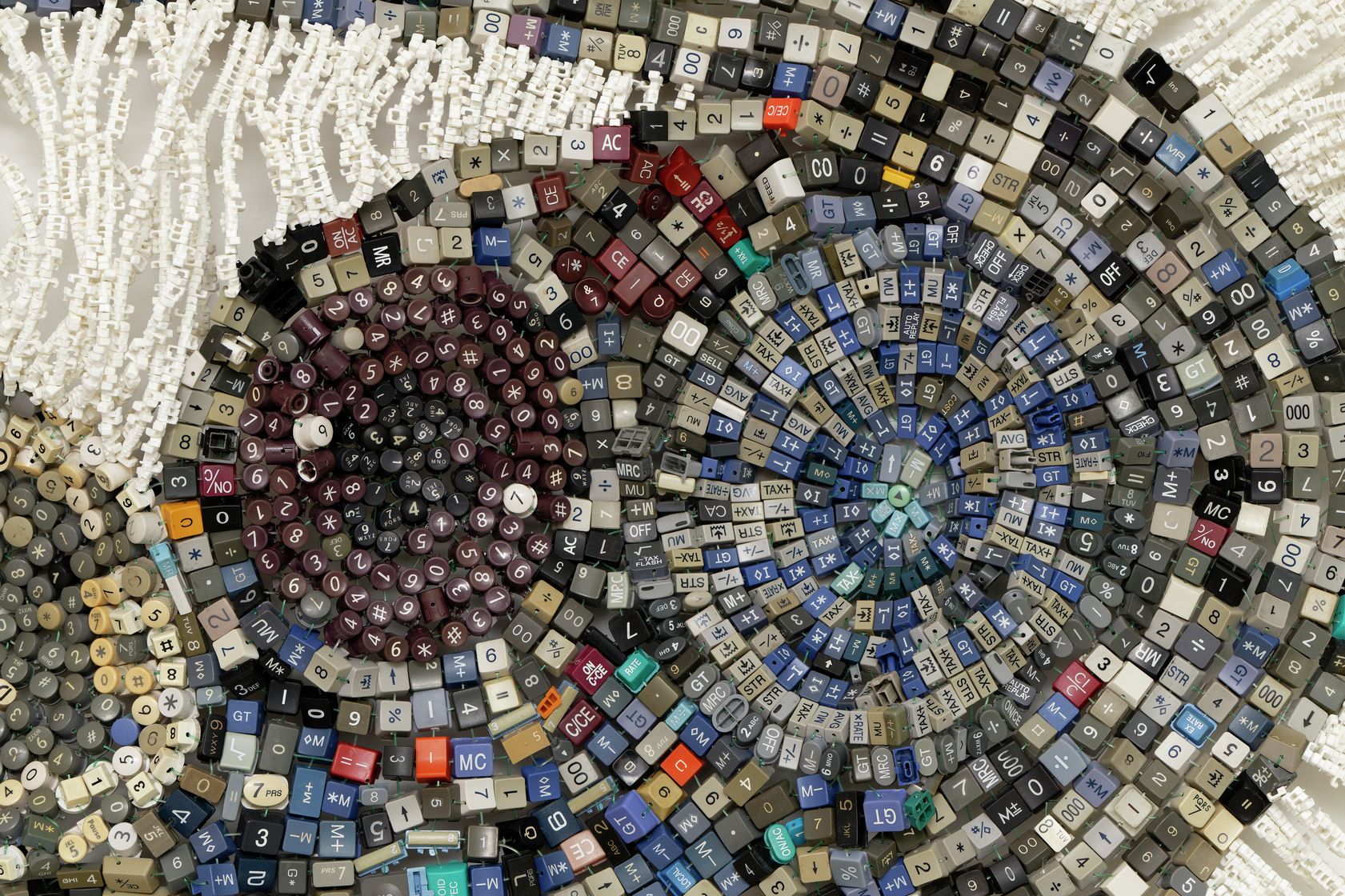
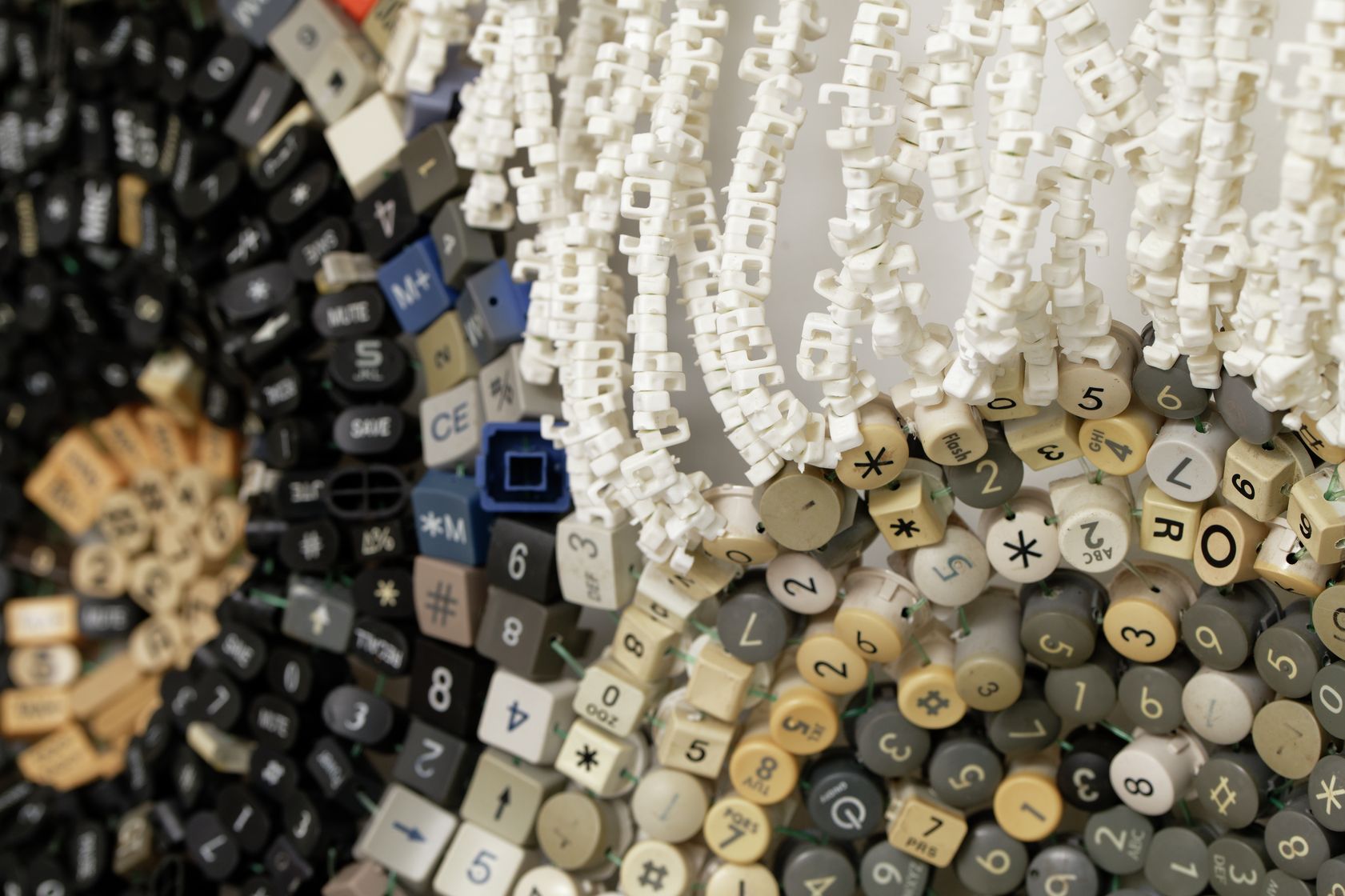
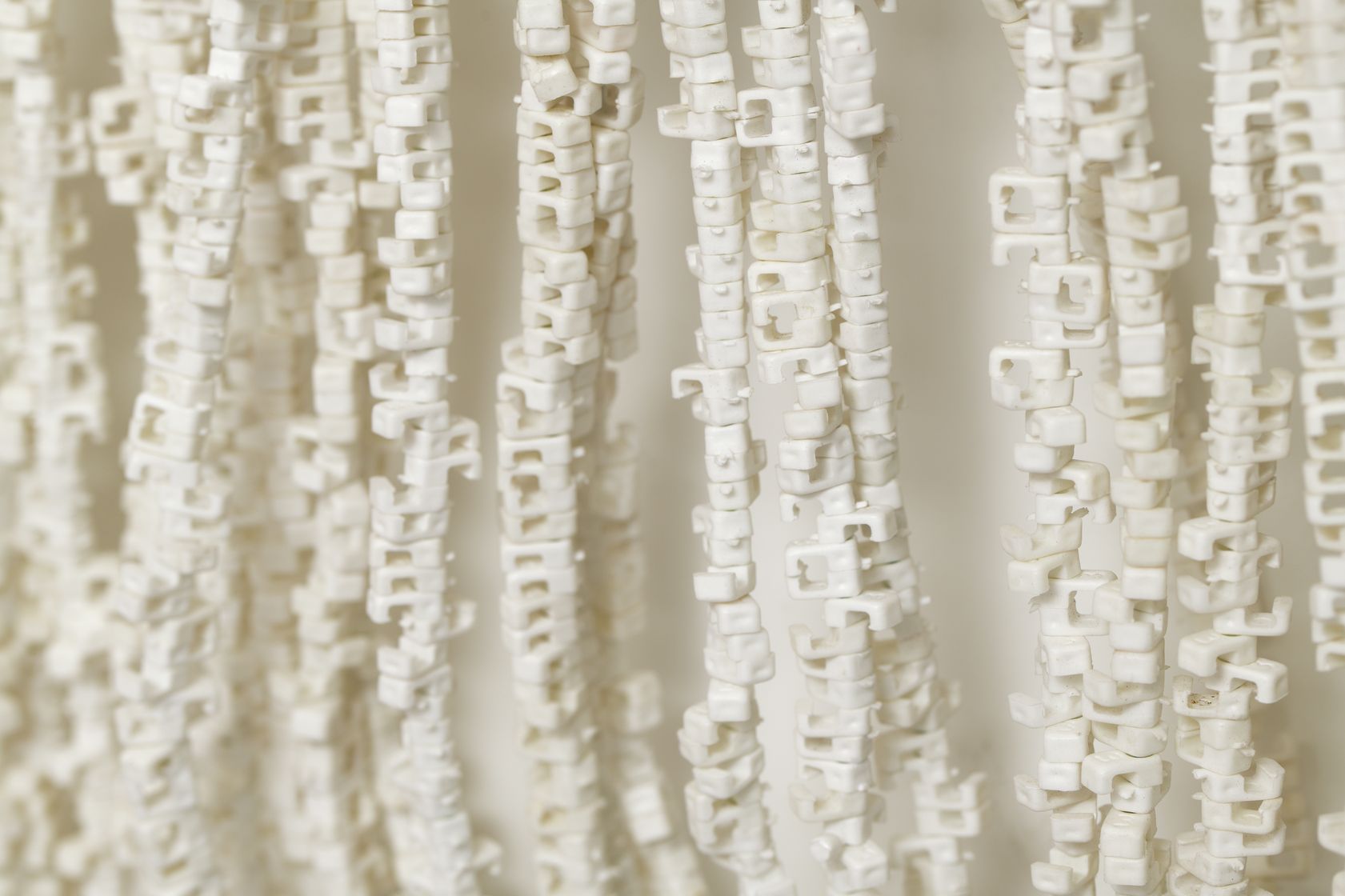
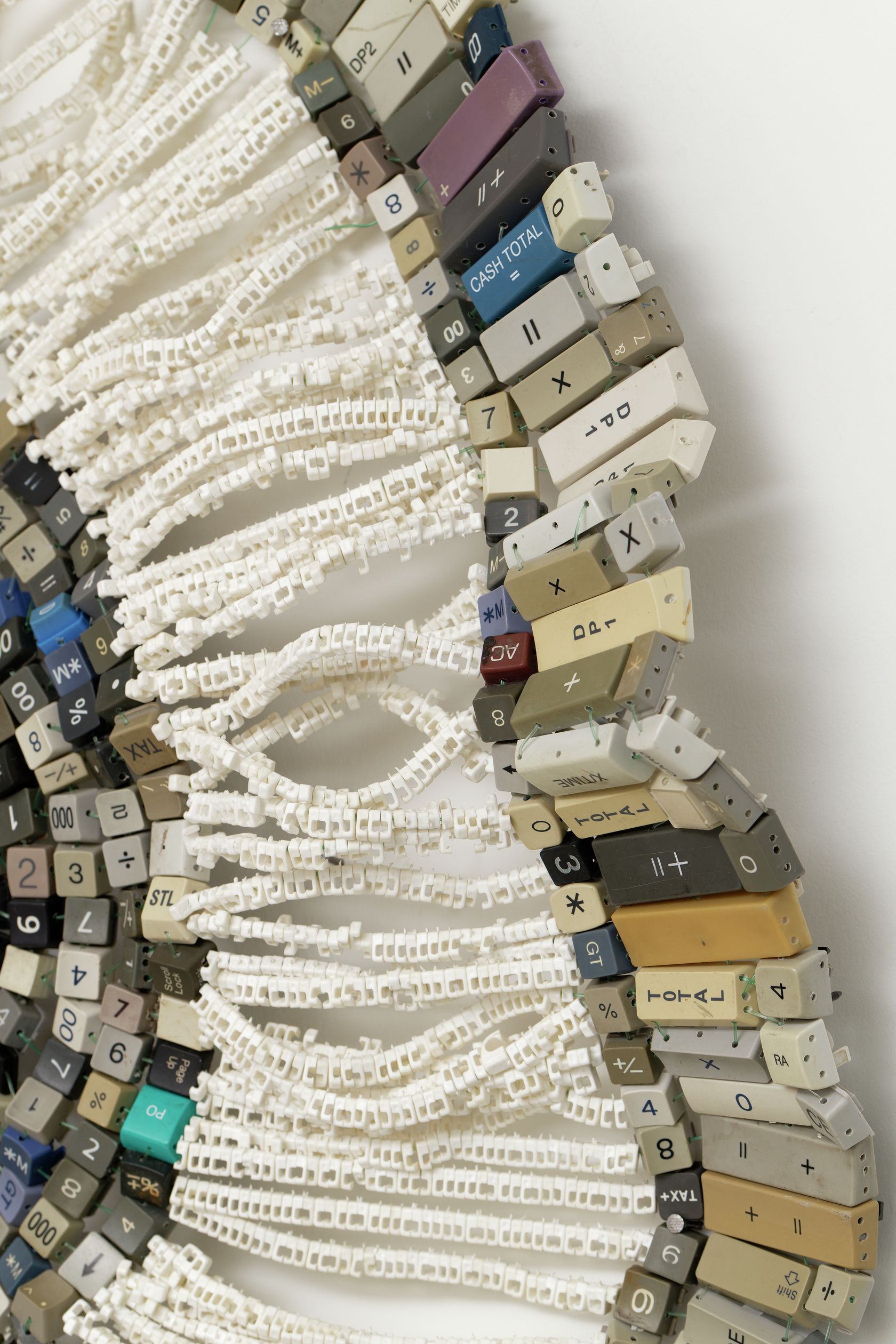
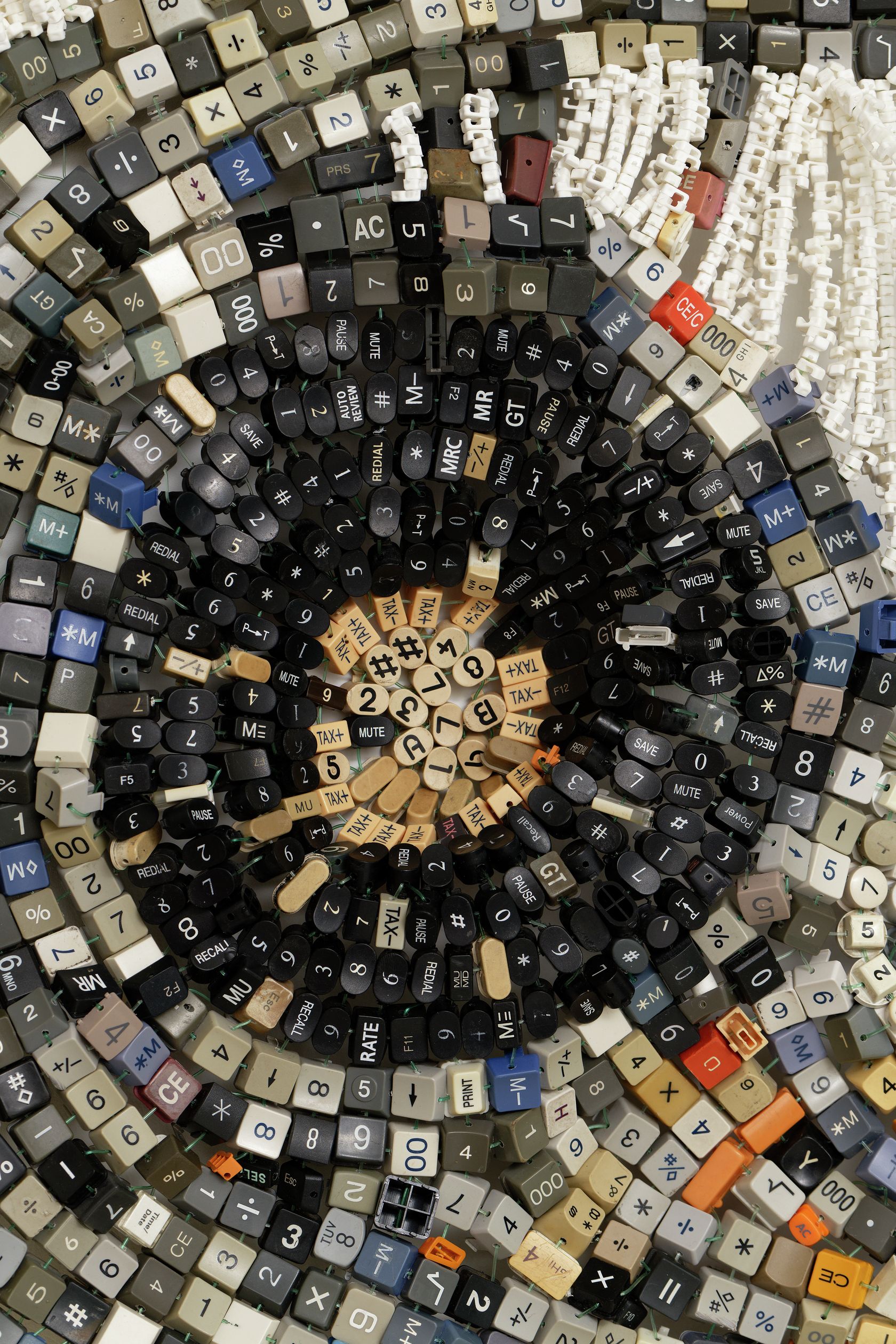
- Moffat Takadiwa
- Cracking the system (b) , 2022
- Computer, calculator and telephone keys and nail clippers
-
- 120 ×
- 156 × cm
- 47 2/8 ×
- 61 3/8 × inches
Xie Lei chose painting through personal conviction, as it opens up a pathway towards a language capable of expressing his sensory universe and a field of experimentation that allows him to delve into the specificity of this medium in the contemporary world. His work always starts with a basis in reality before taking flight to explore uncertain or ambiguous realms that are transformed by his imagination. Most of his paintings refer to murky or disturbing situations, discreetly linked to literary or cinematographic memories or drawn from a profound crucible of personal emotions. His work dwells on the complexity of events and situations and above all their ambiguity and the tensions they foster. His recent painting intrigues through its exploration of a world in-between sleep and death, torment and eroticism. The colors are somber but shift towards the luminous and the powerful. His touch is both fluid and more textured. Xie Lei’s painting is singular in that it offers up an alternative perception of time: in a salutary manner, it suggests a slowing of the spectator’s gaze and an escape from the intoxicating world of immediacy and constant acceleration.
Xie Lei (b. 1983 in China) has lived and worked in Paris since 2006. He graduated from the CAFA in Beijing then the ENSBA in Paris. His works have been exhibited in numerous public and private institutions: PS120, Berlin (DE); MAC VAL, Vitry-sur-Seine (FR); Langen Foundation, Neuss (DE); Musée National d’Histoire d’Immigration, Paris (FR); Yishu 8 Foundation, Beijing (CN); Ricard Foundation, Paris (FR). His oeuvres feature in many public and private collections such as those of the MAC VAL, the Colas Foundation, the Burger Collection and the X Museum in Beijing. In 2020-21, Xie Lei was a resident of the Casa de Velázquez in Madrid and of the Boghossian Foundation in 2022.
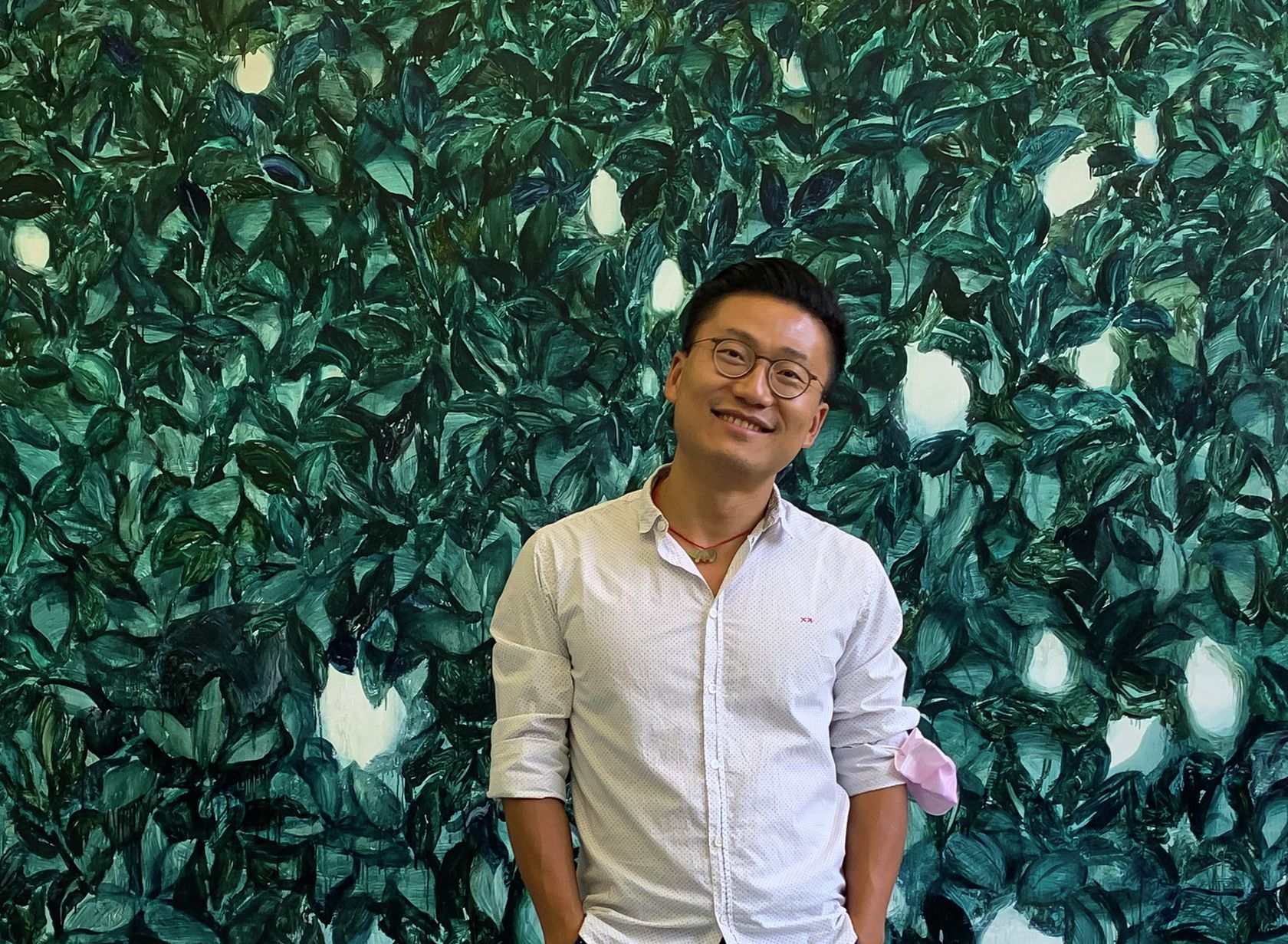
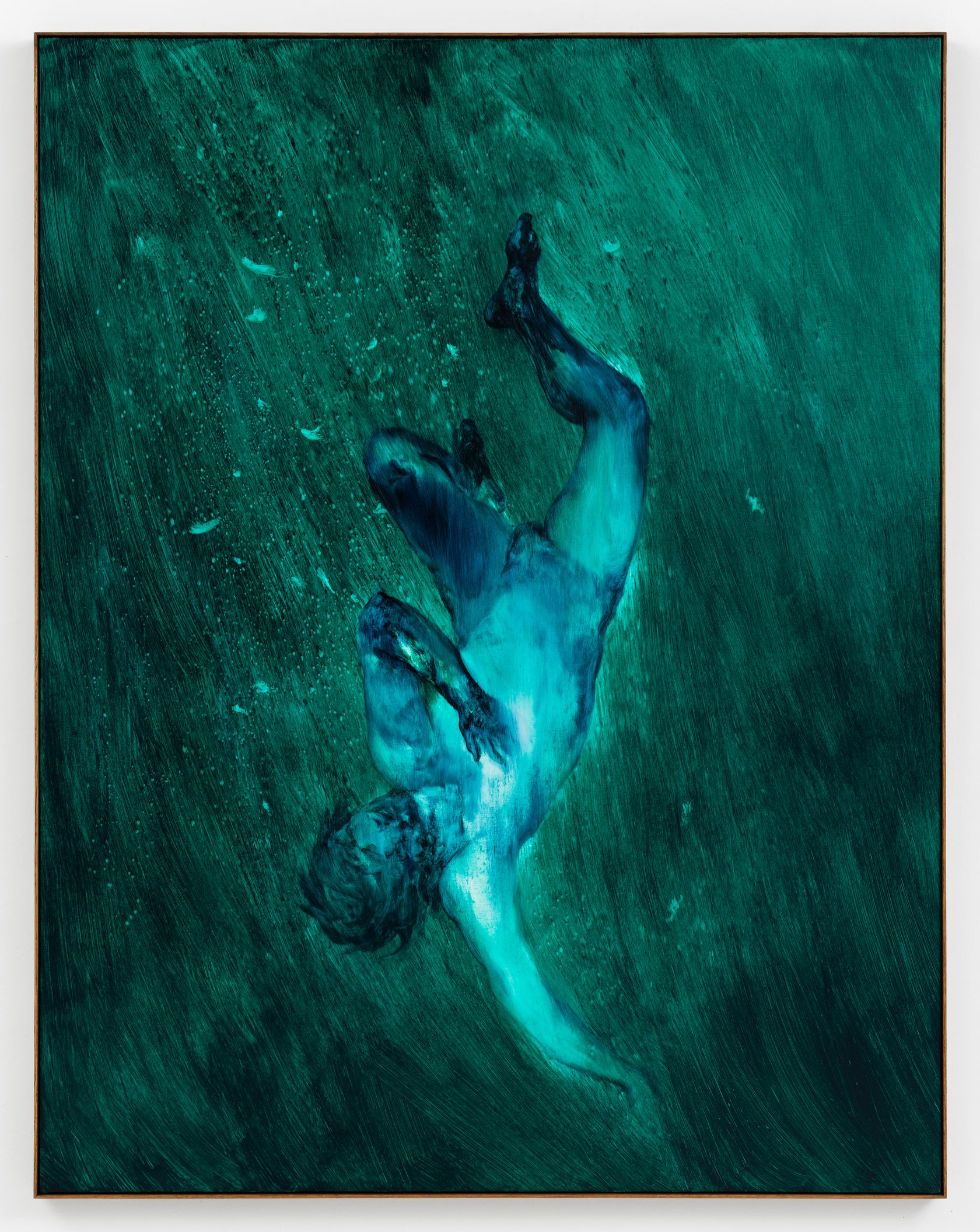
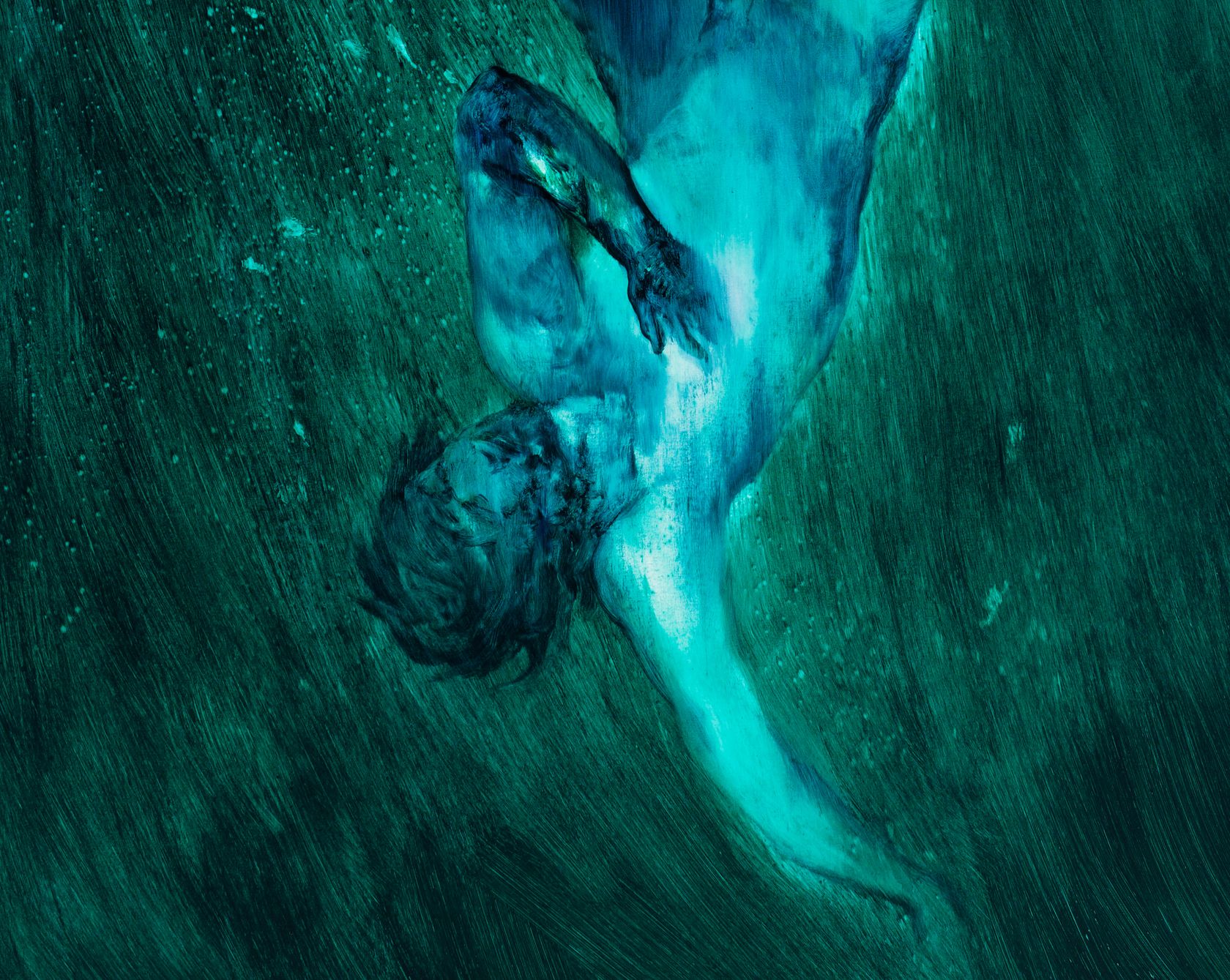
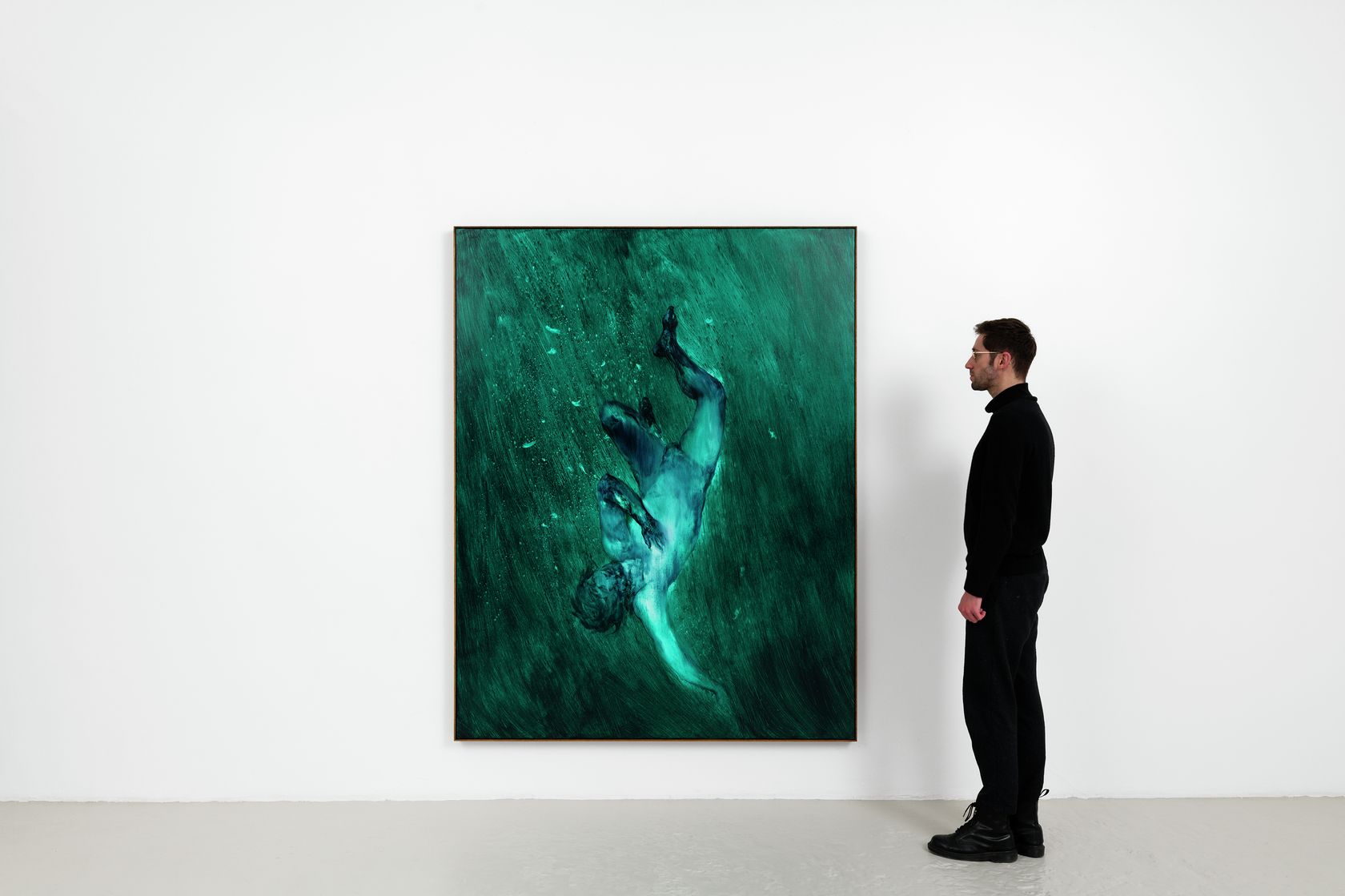
- Xie Lei
- Rescue , 2022
- Oil on canvas
-
- 205 ×
- 160 × cm
- 80 6/8 ×
- 63 × inches
- unframed
- 207.5 ×
- 162.5 ×
- 6 × cm
- 81 11/16 ×
- 64 ×
- 2 3/8 × in
- framed

